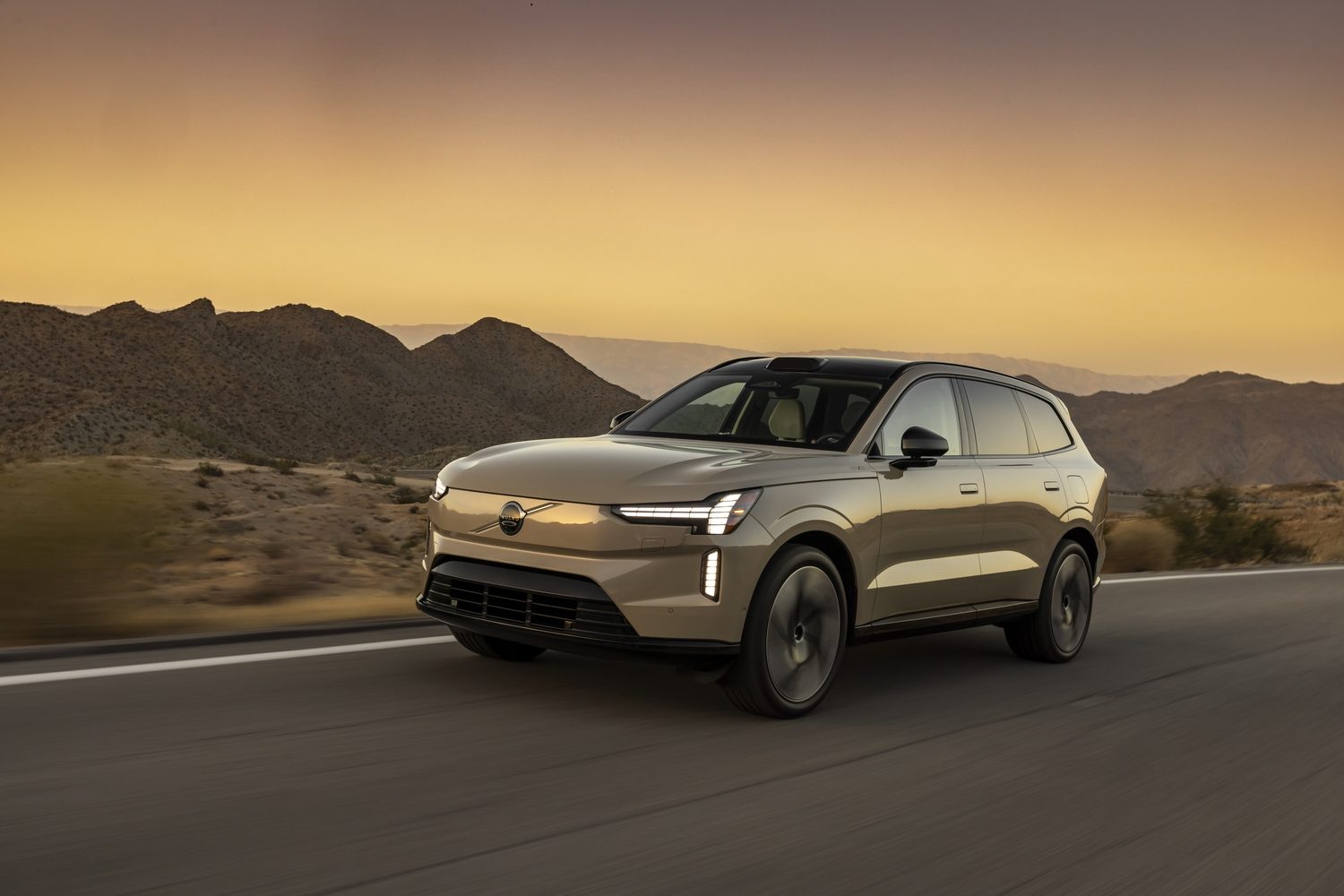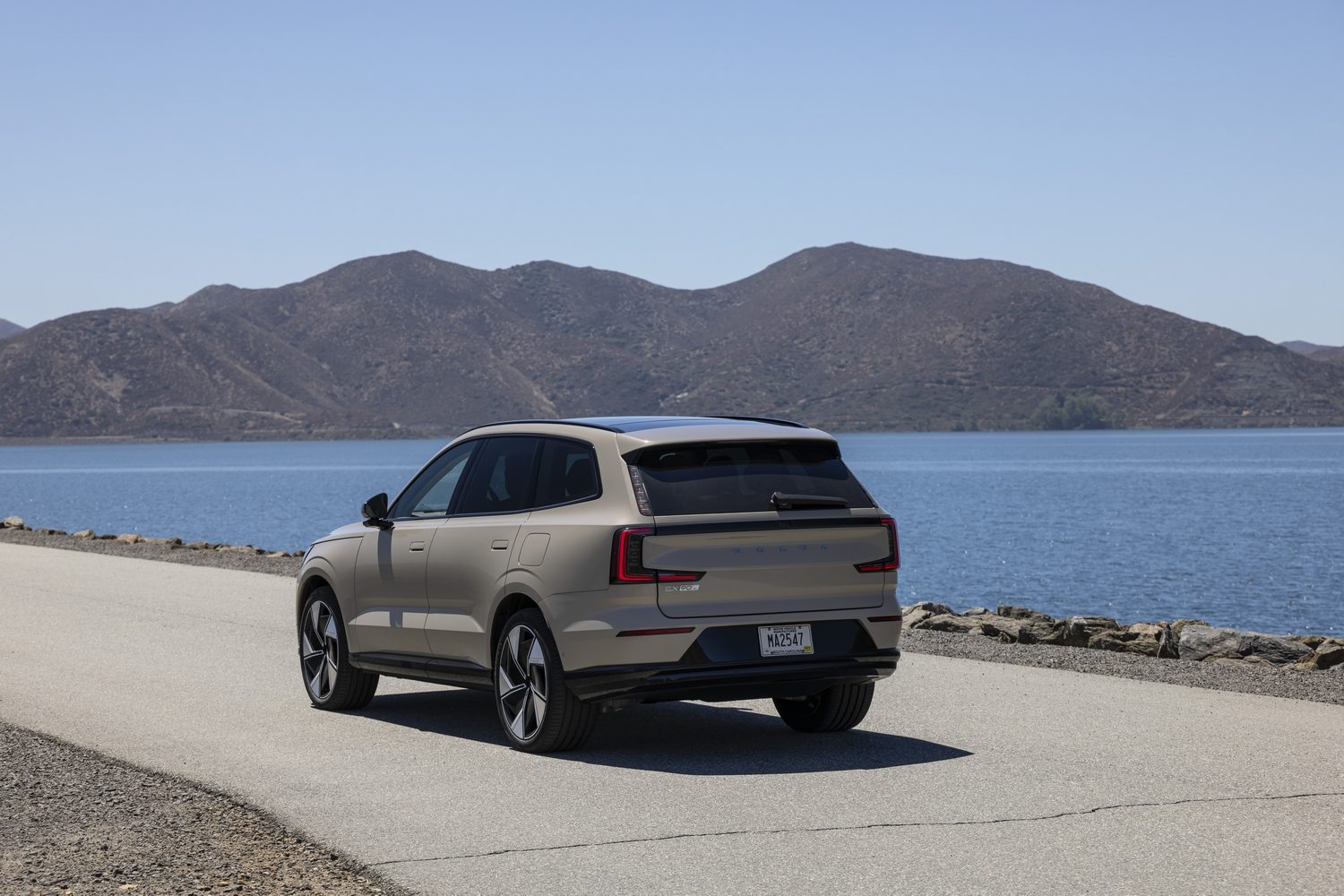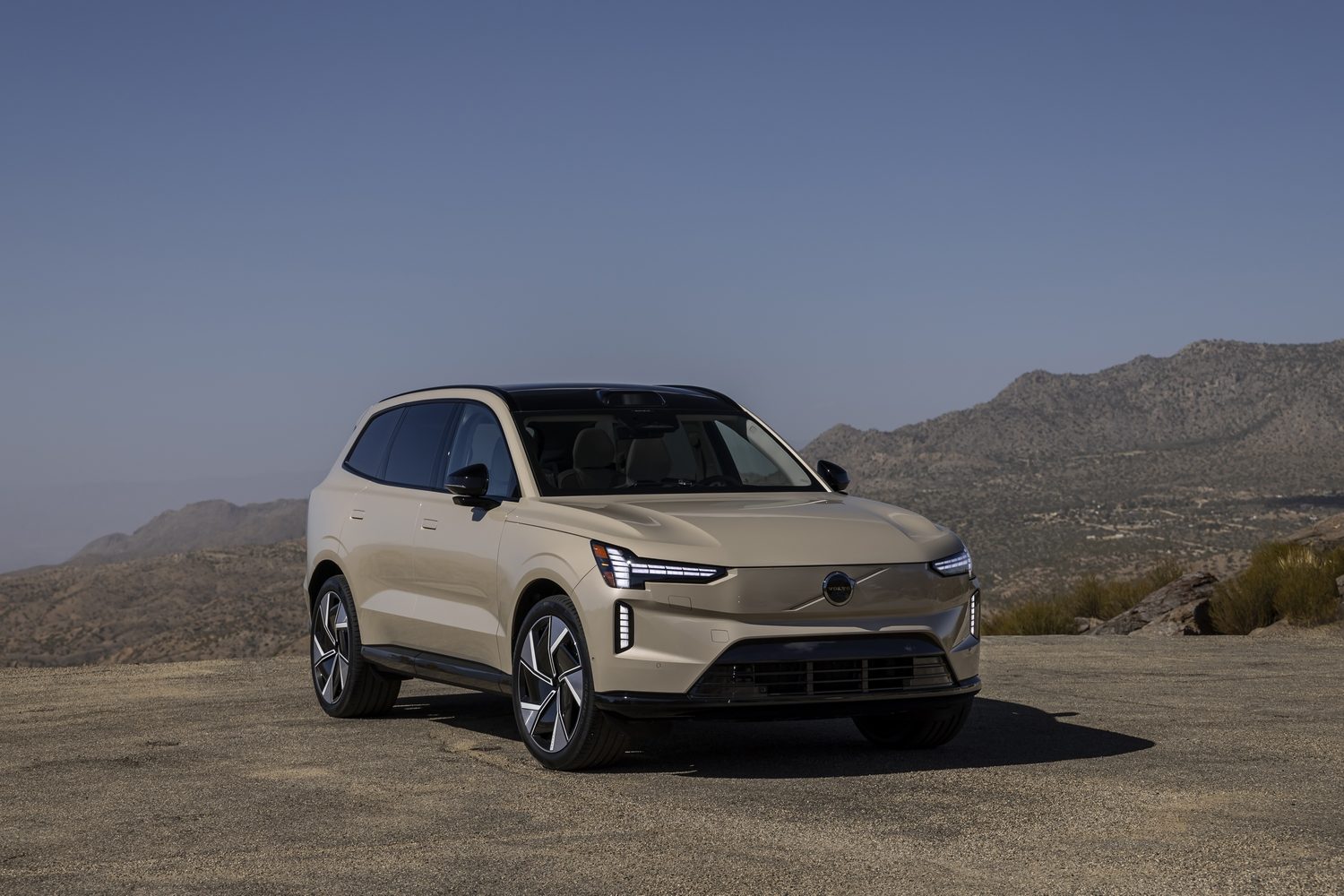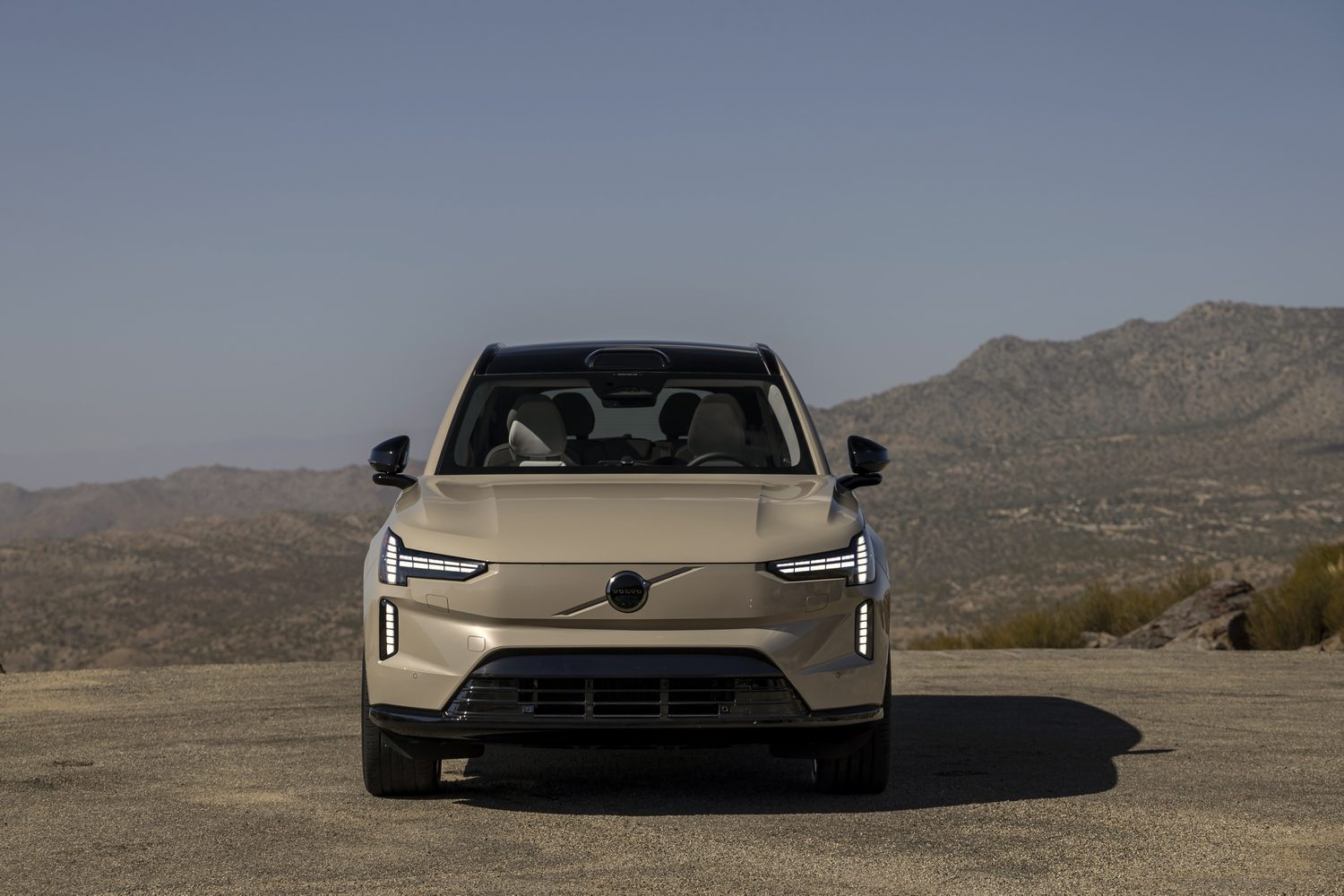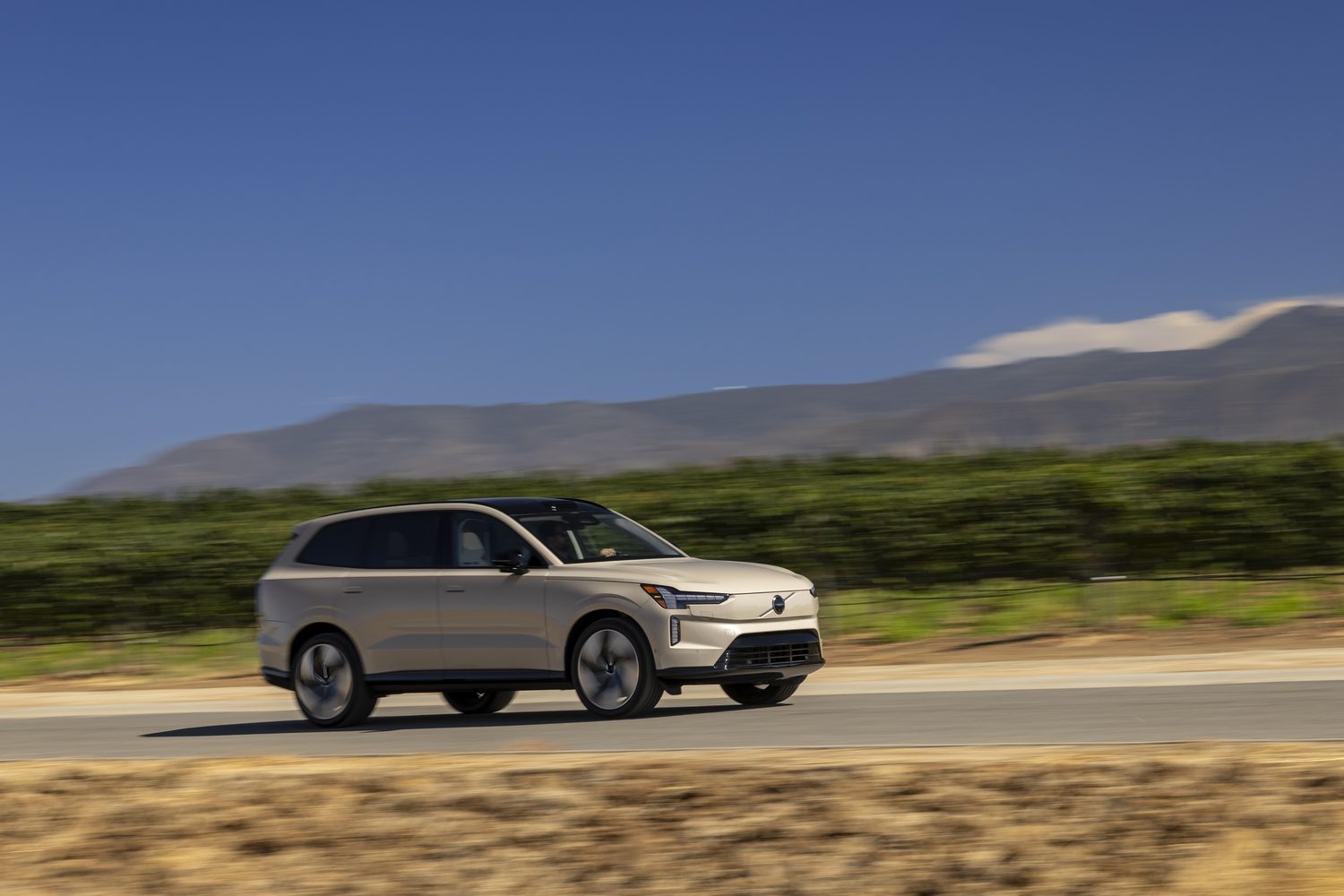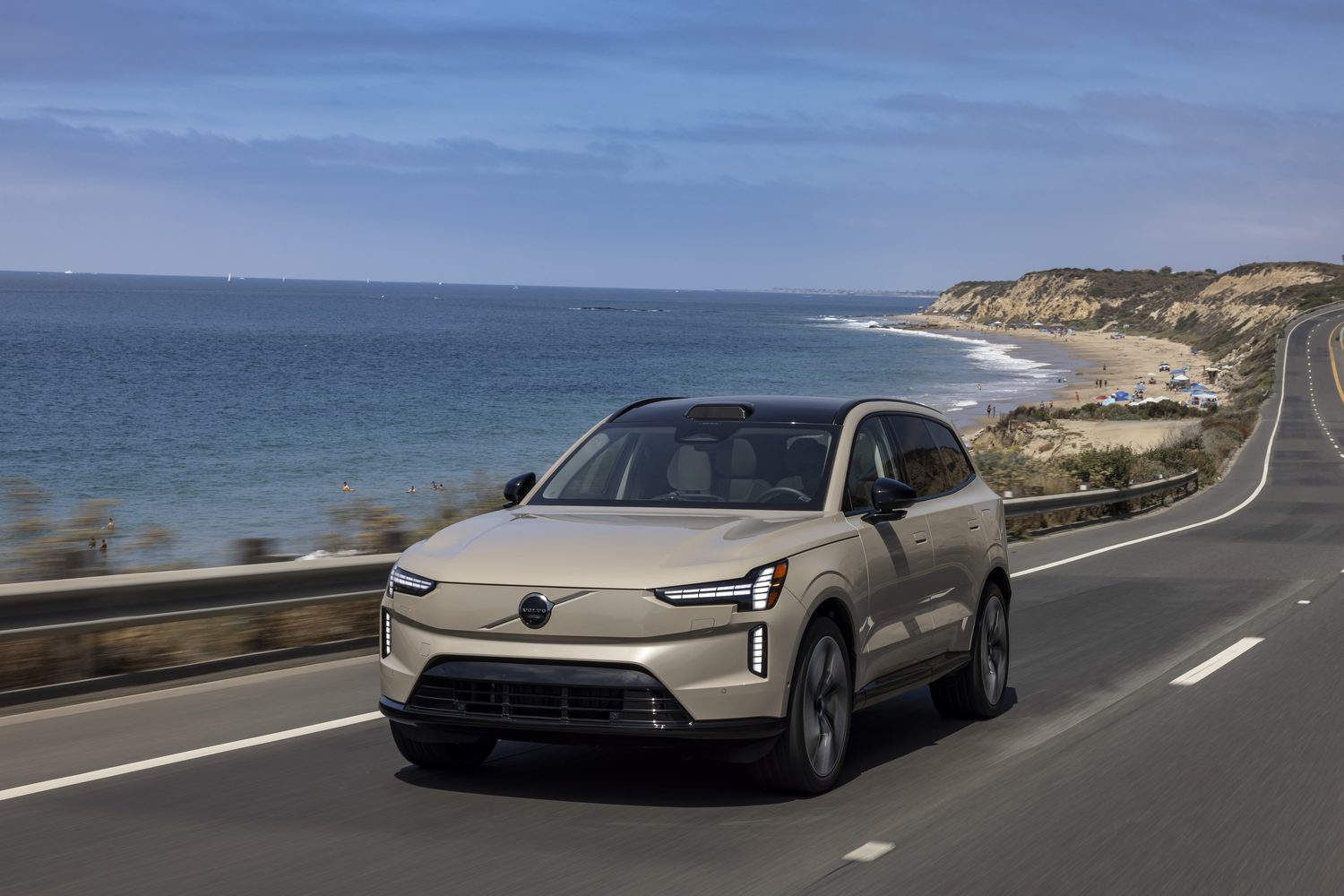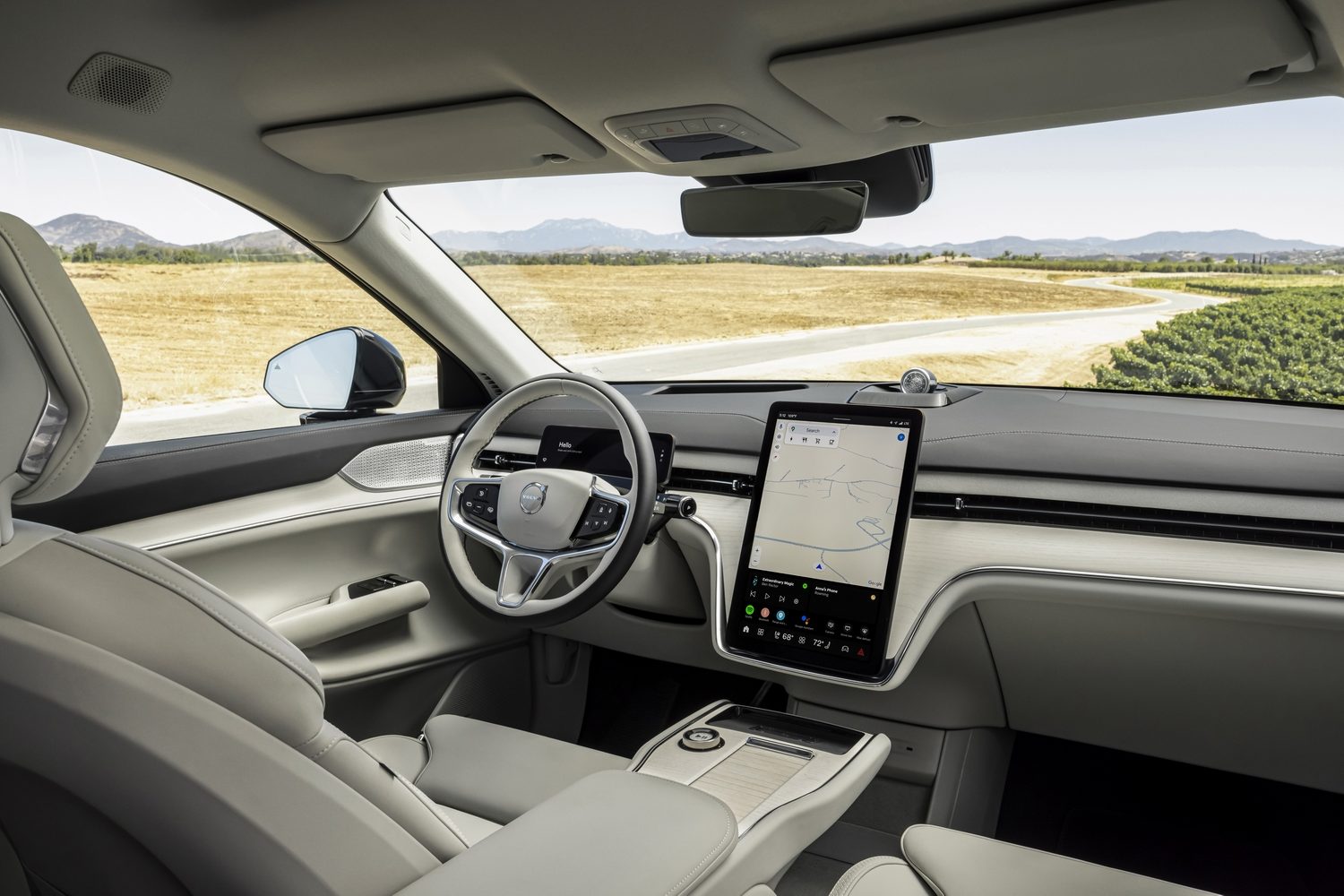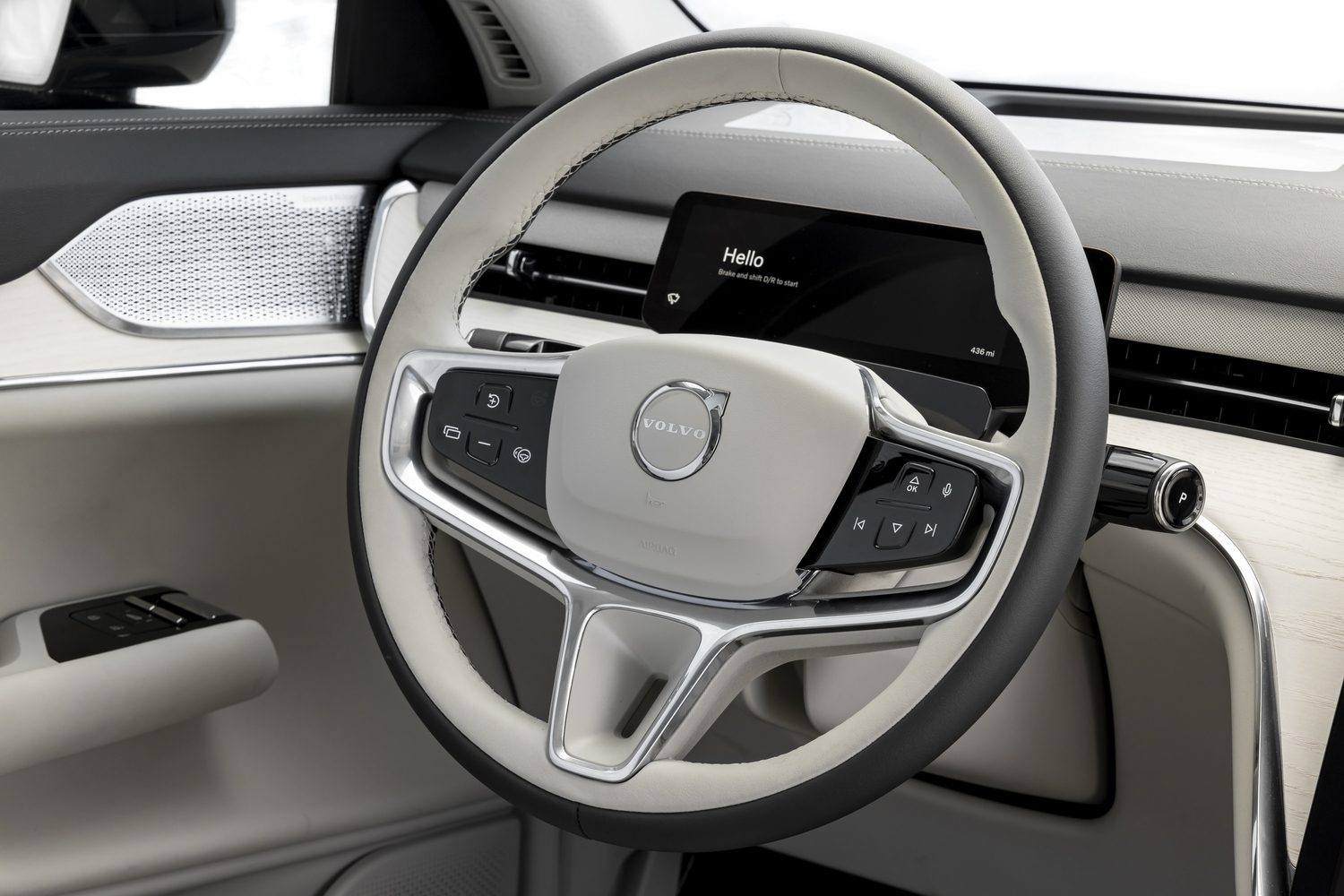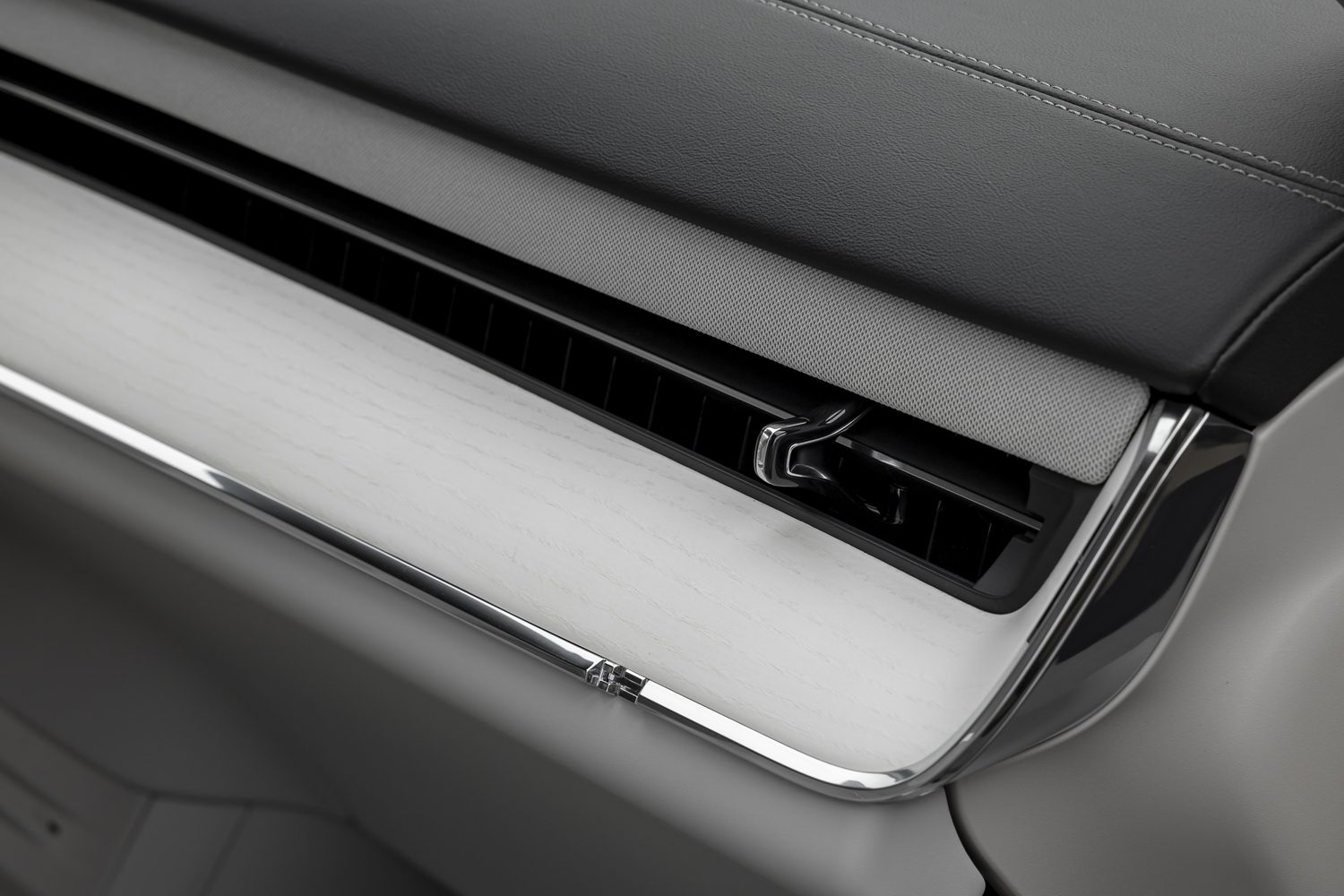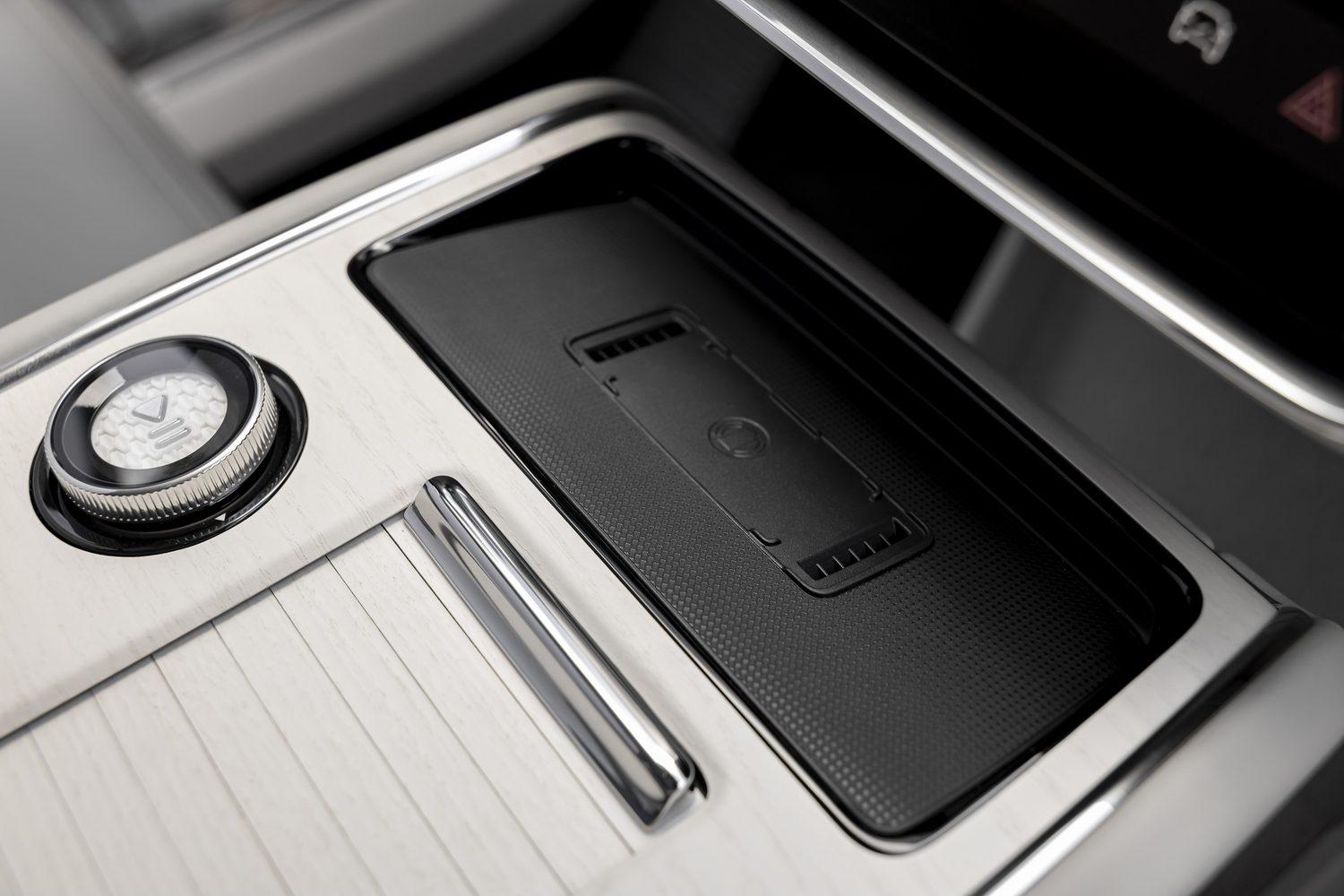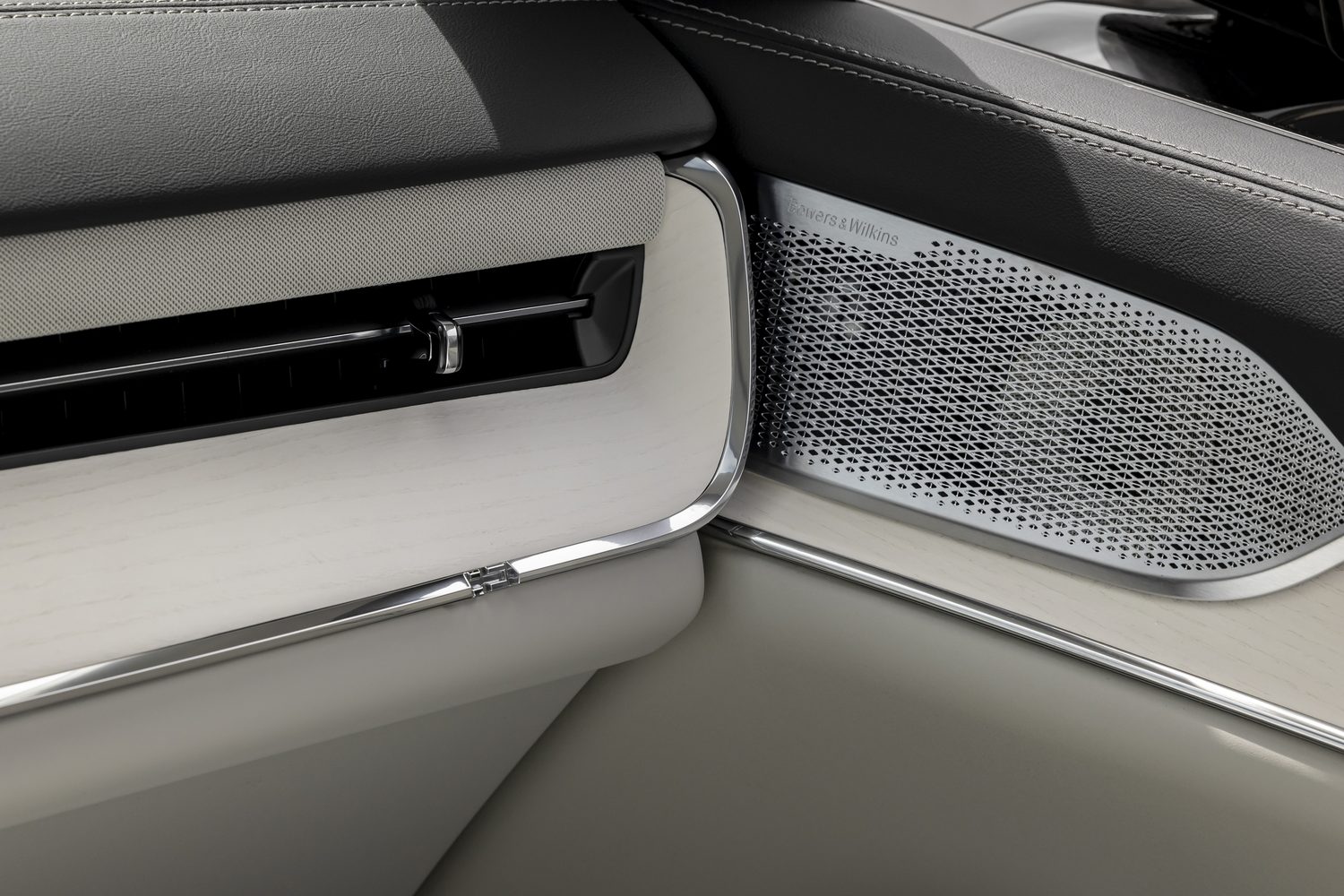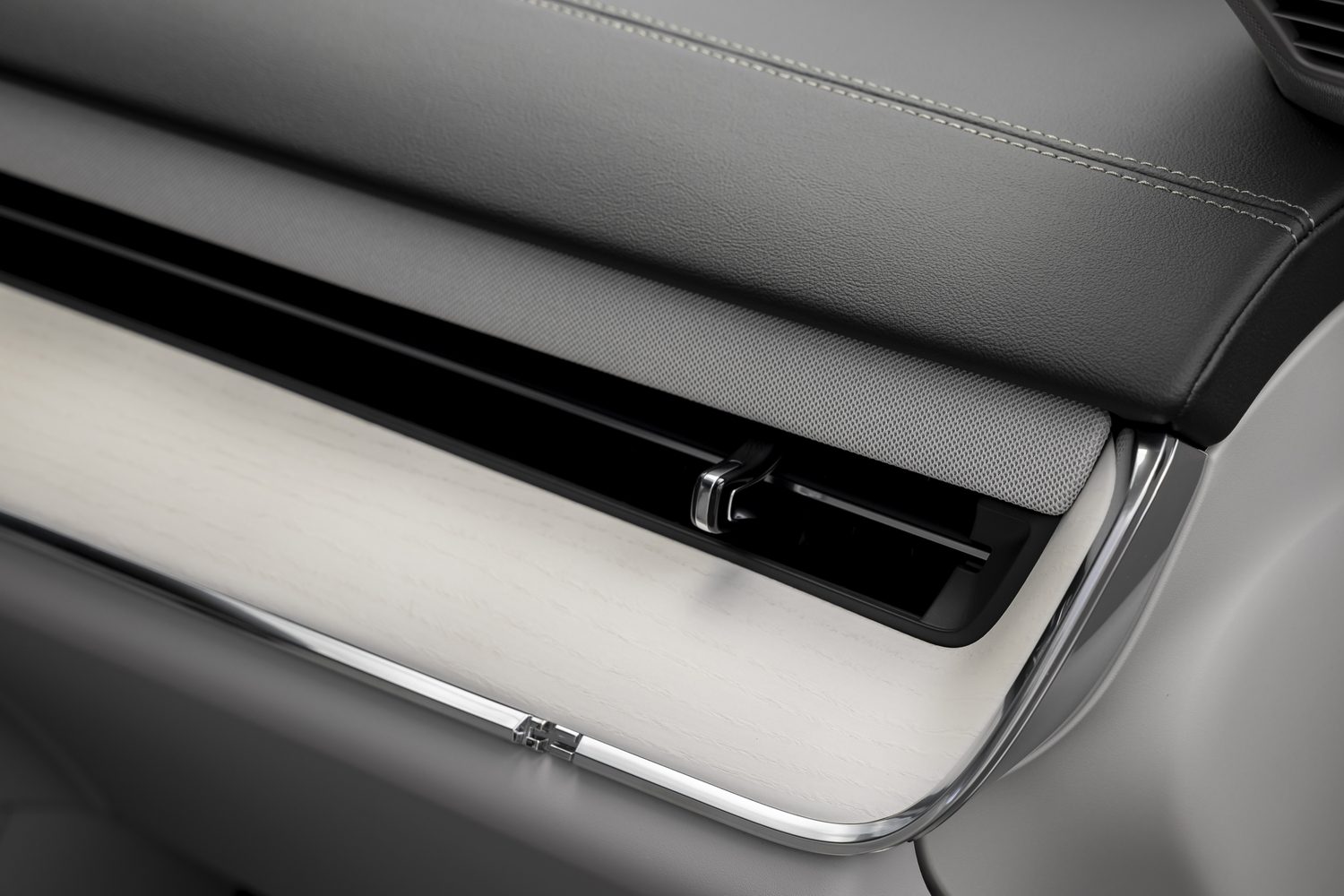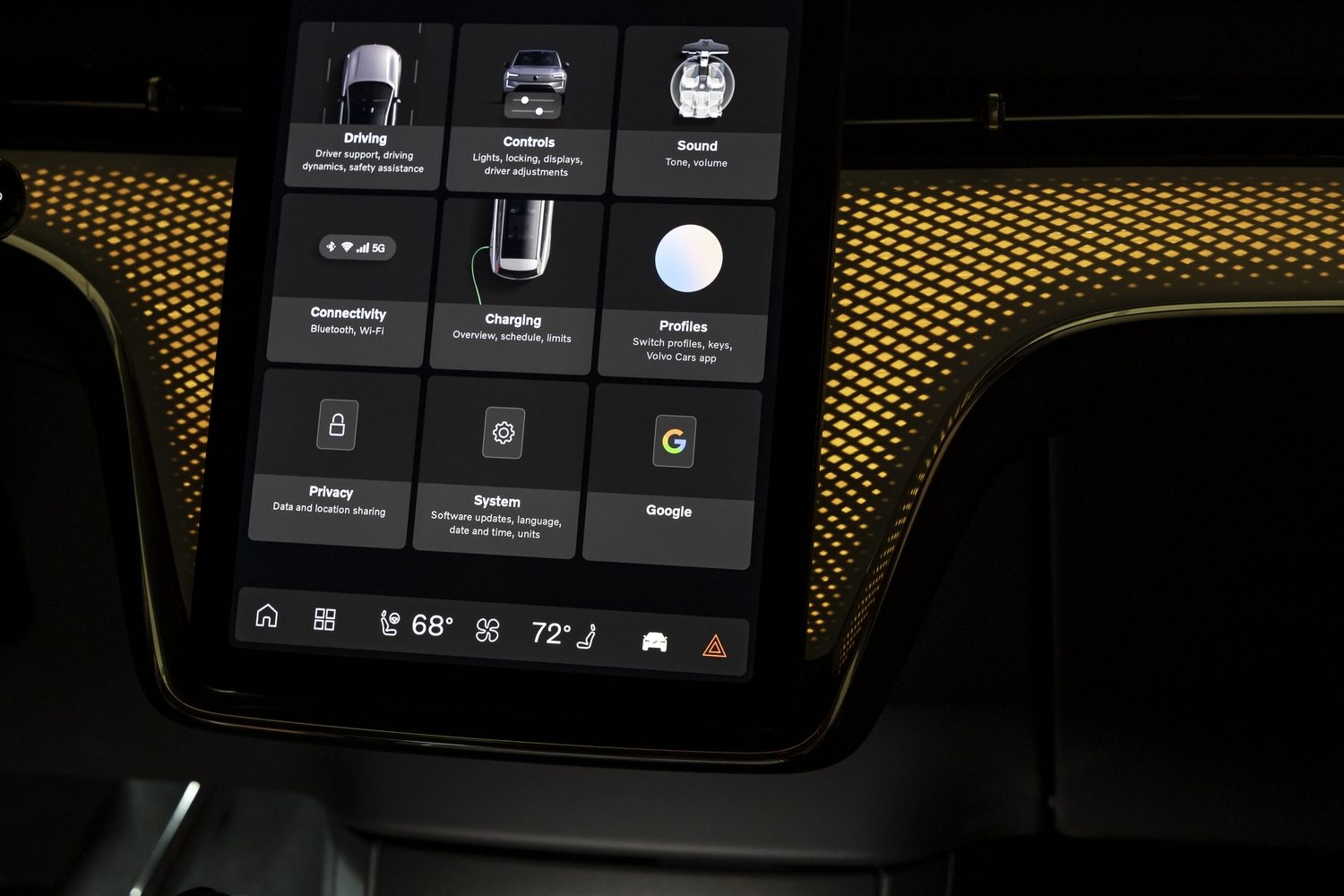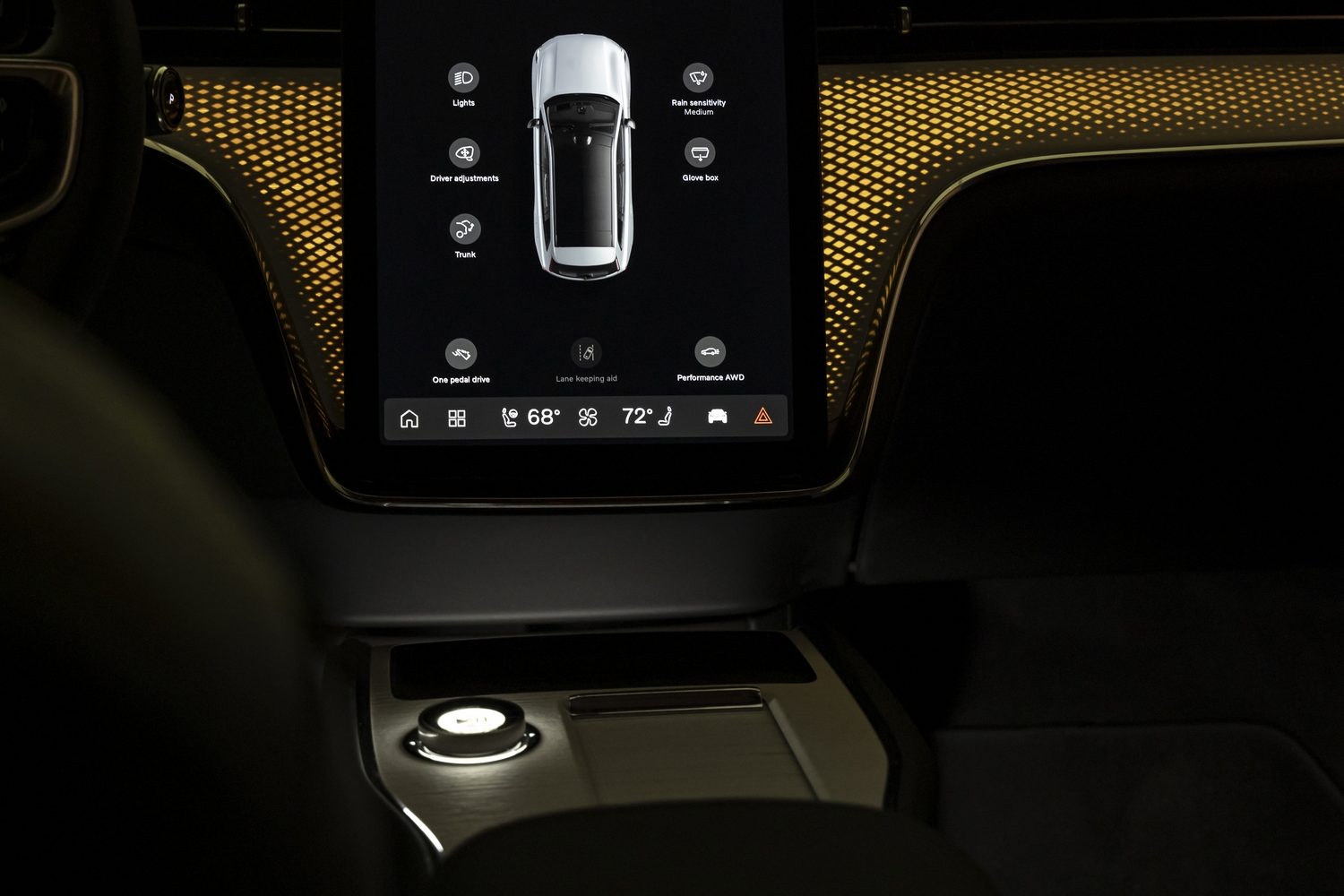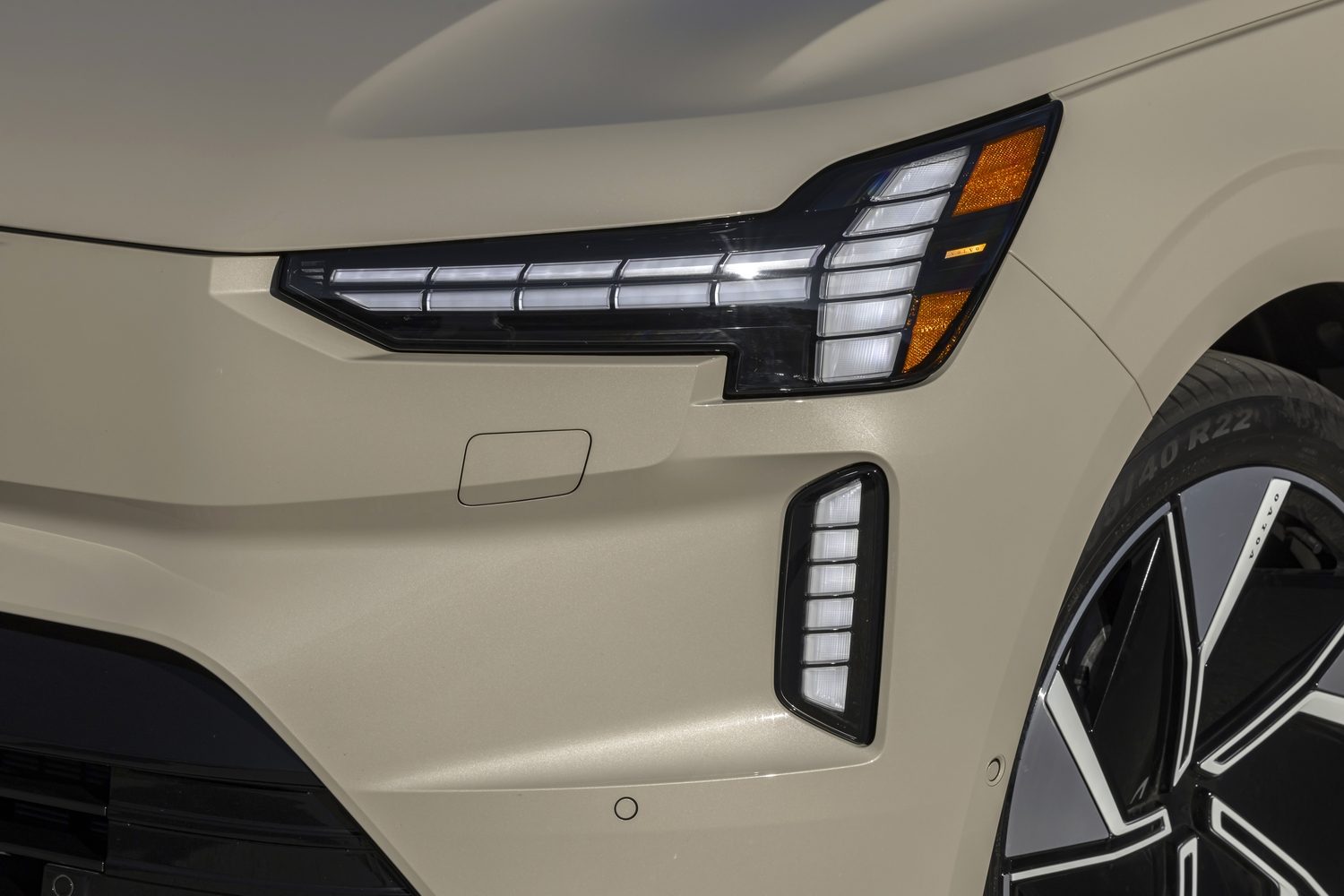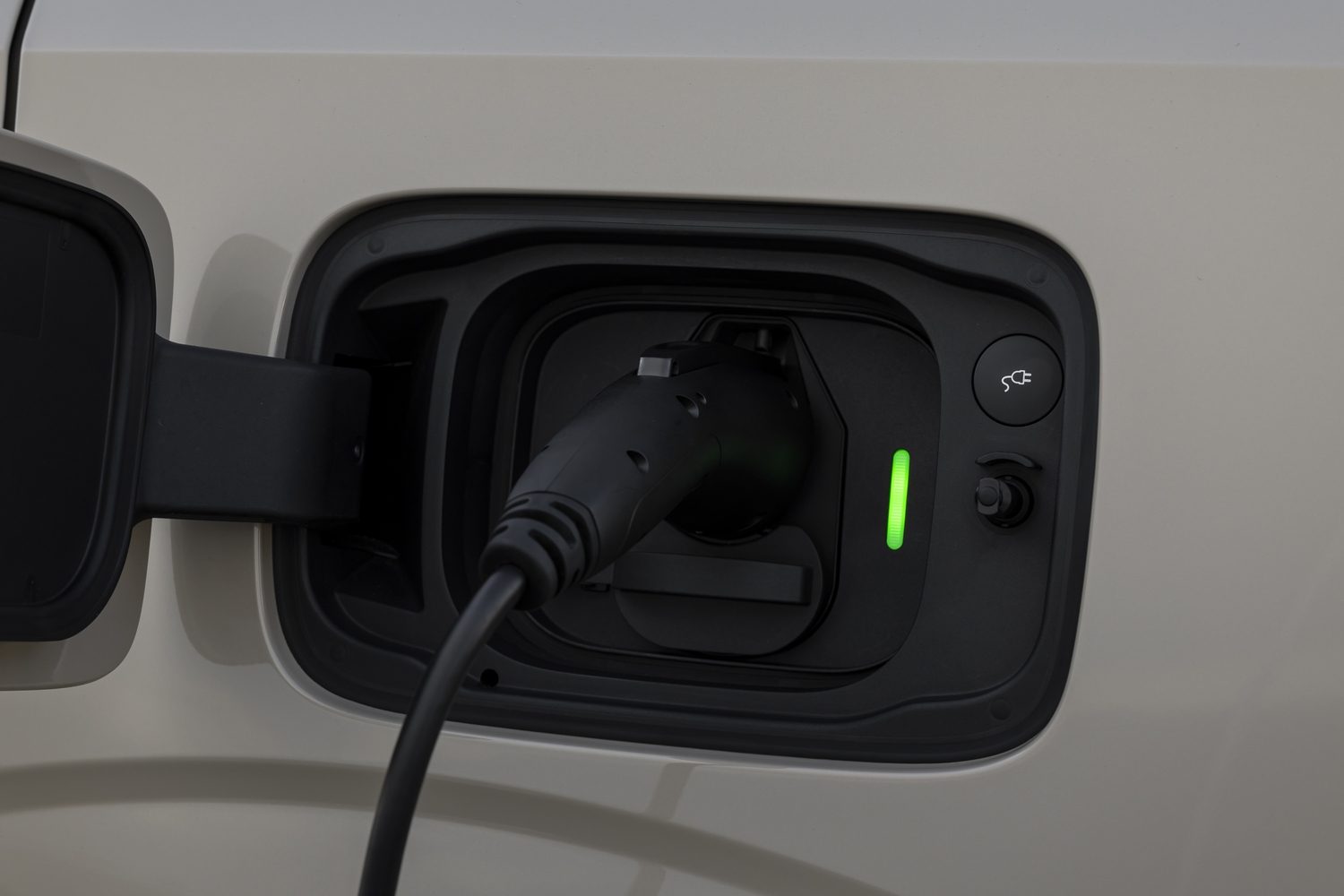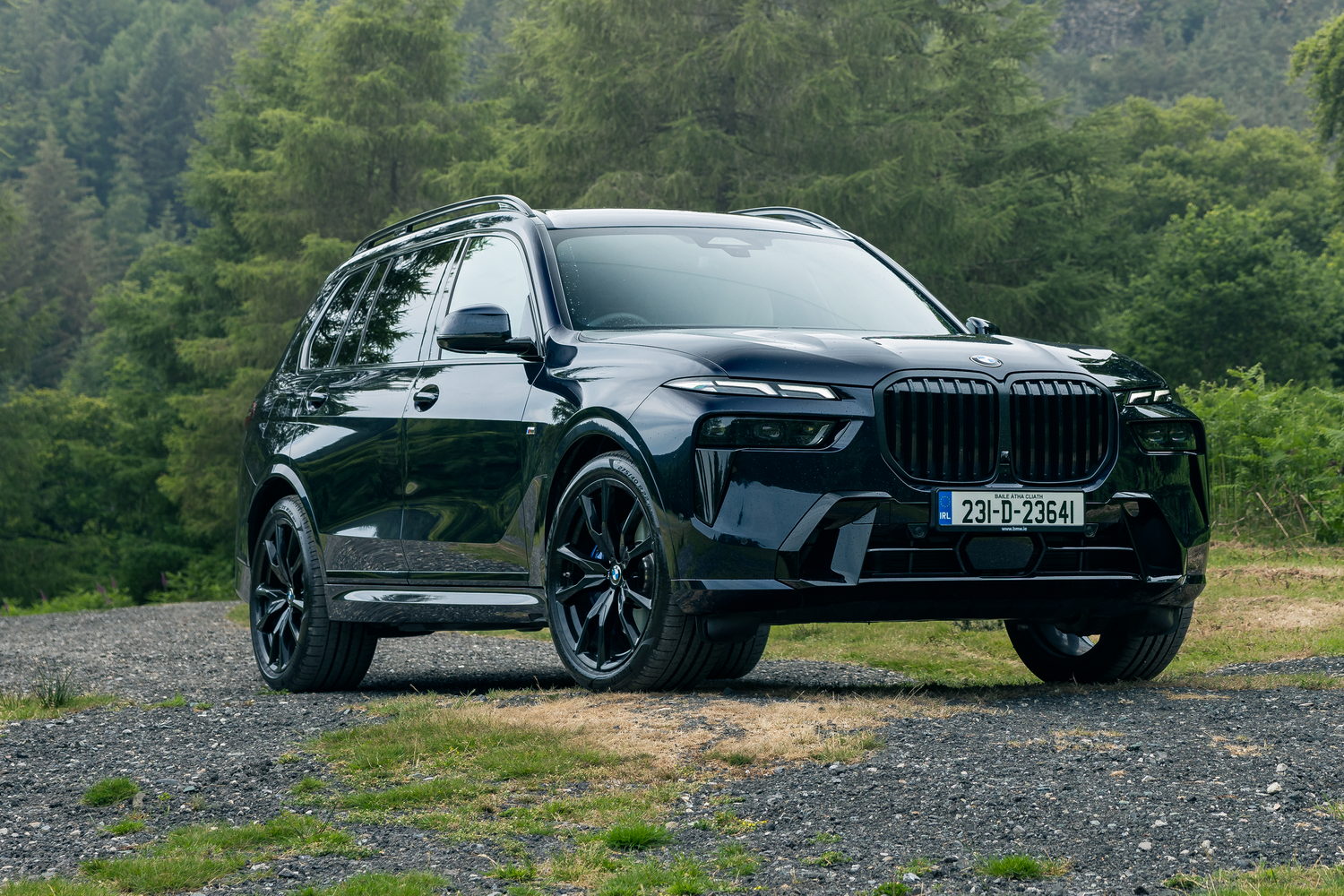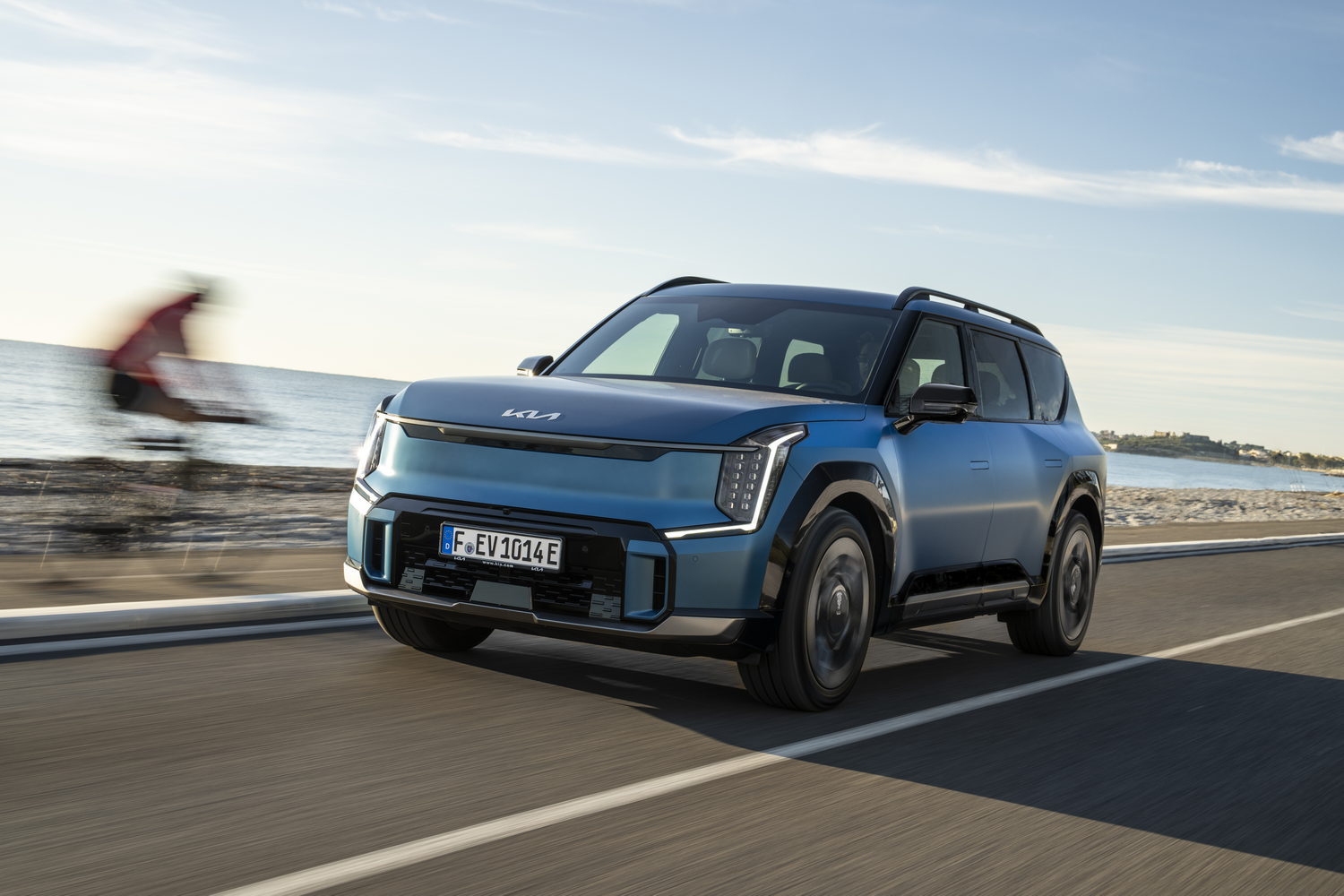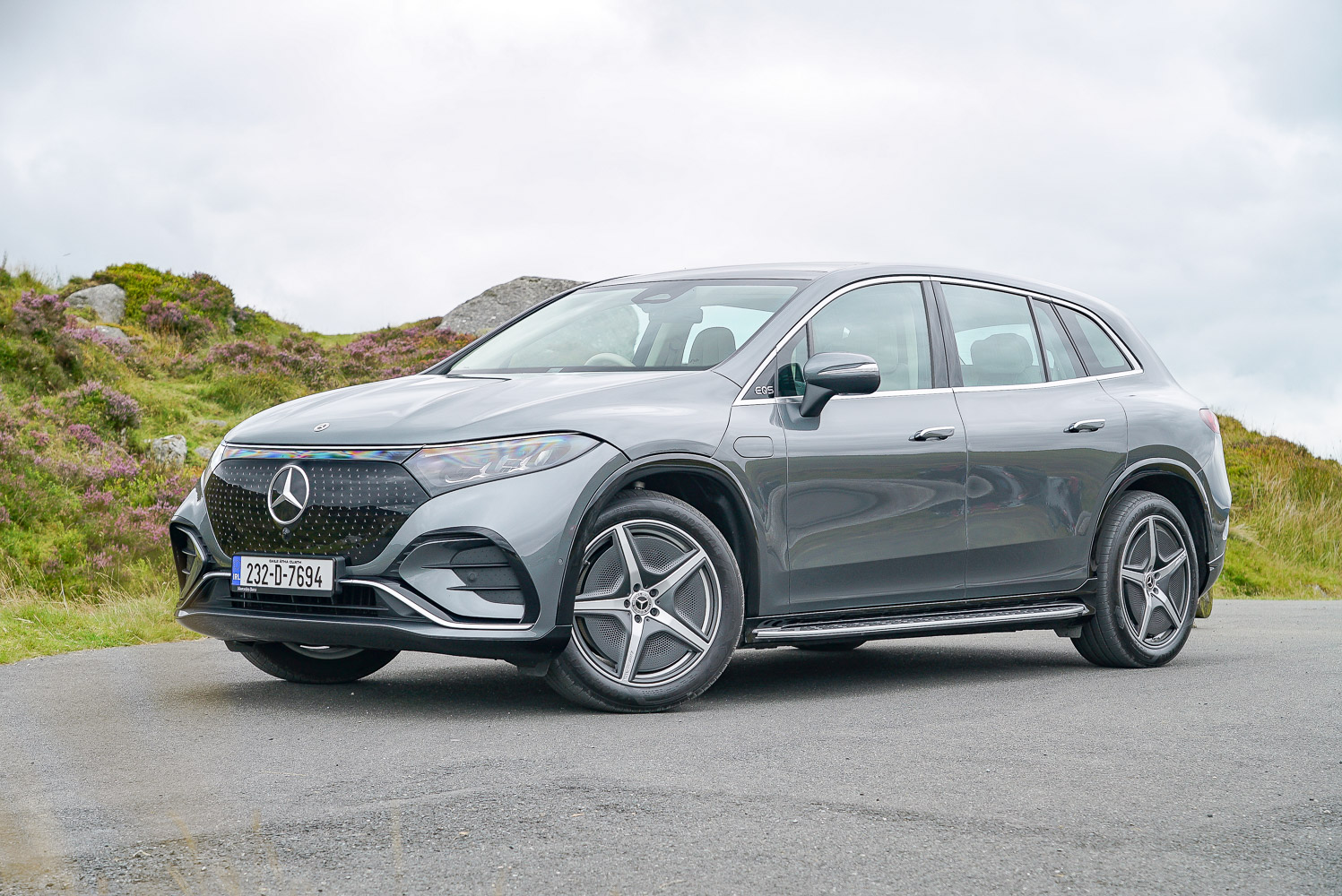It has been nearly two full years since Volvo took the covers off its EX90, effectively an all-electric alternative to the XC90 seven-seater that has been a firm family favourite for decades. The Swedish brand unveiled its new EV accompanied by an impressive suite of facts and figures, promising incredible safety, autonomy and cutting-edge technology. It took a little longer than planned to bring all that promise to fruition, but finally the EX90 is ready for its eagerly awaiting buyers.
We travelled to the USA to attend the first international media drive event for the EX90 ahead of its introduction to the Irish market in 2025. The test car was a high-spec Twin Motor Performance variant with the full complement of seven seats.
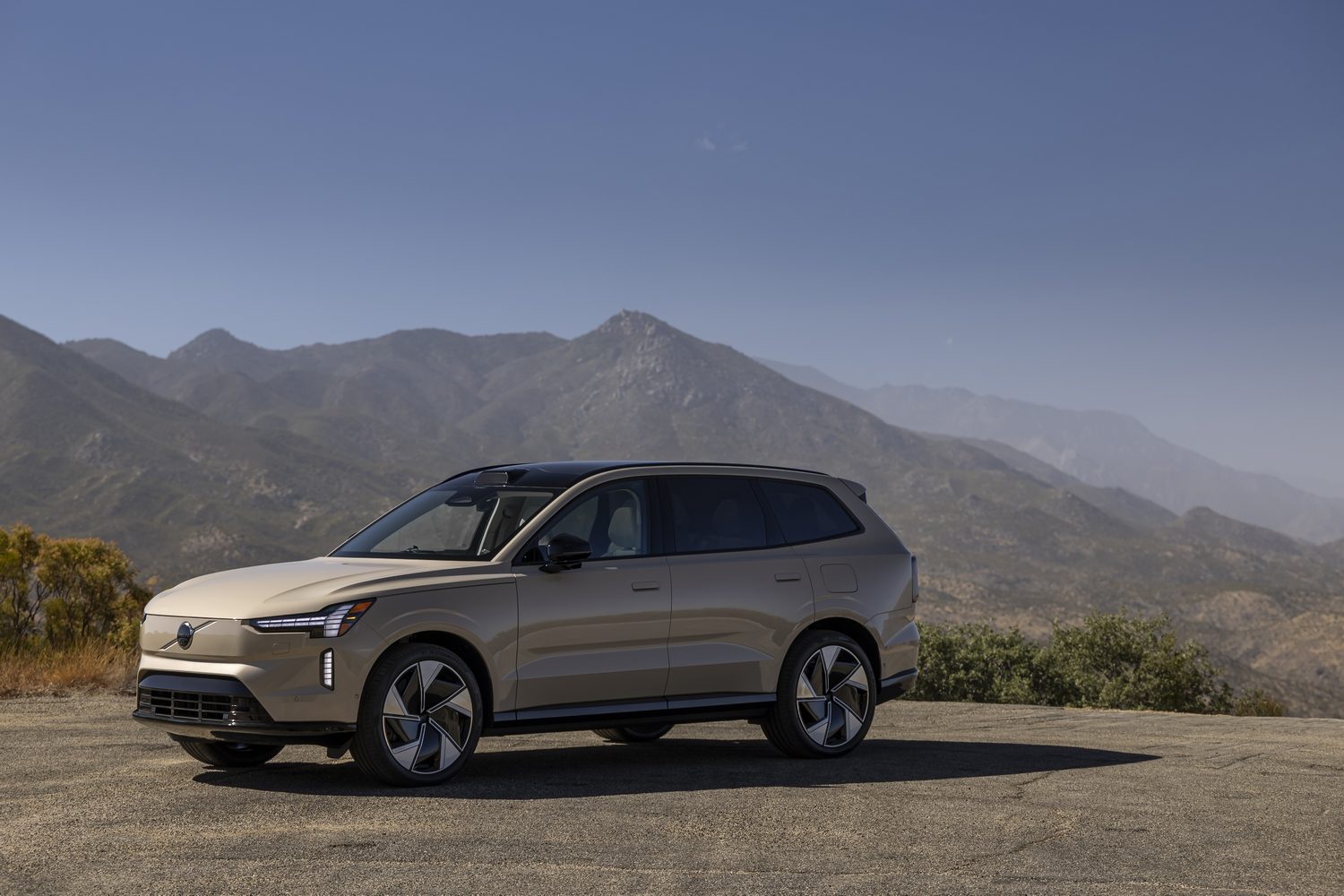
How big is the Volvo EX90?
Given the appearance of the EX90, and its name, it shouldn’t be surprising that the new EV is about the same size as the current Volvo XC90 SUV. The EX90 is 84mm longer and 41mm wider, though it’s 27mm lower and its wheelbase is only a single millimetre longer. Unlike some similarly large premium SUVs, Volvo doesn’t offer the EX90 with a rear-wheel steering system to help reduce its turning circle.
Nonetheless, all this translates into a spacious cabin with seating for up to seven. For some markets there will be four-seat, five-seat and six-seat variations, but only the seven-seat EX90 will be sold in Ireland. The seven-seat layout is enhanced by Volvo’s use of individual seats throughout, which offers greater flexibility in terms of configuration and enables more space for passengers depending on how you choose to position the seats.
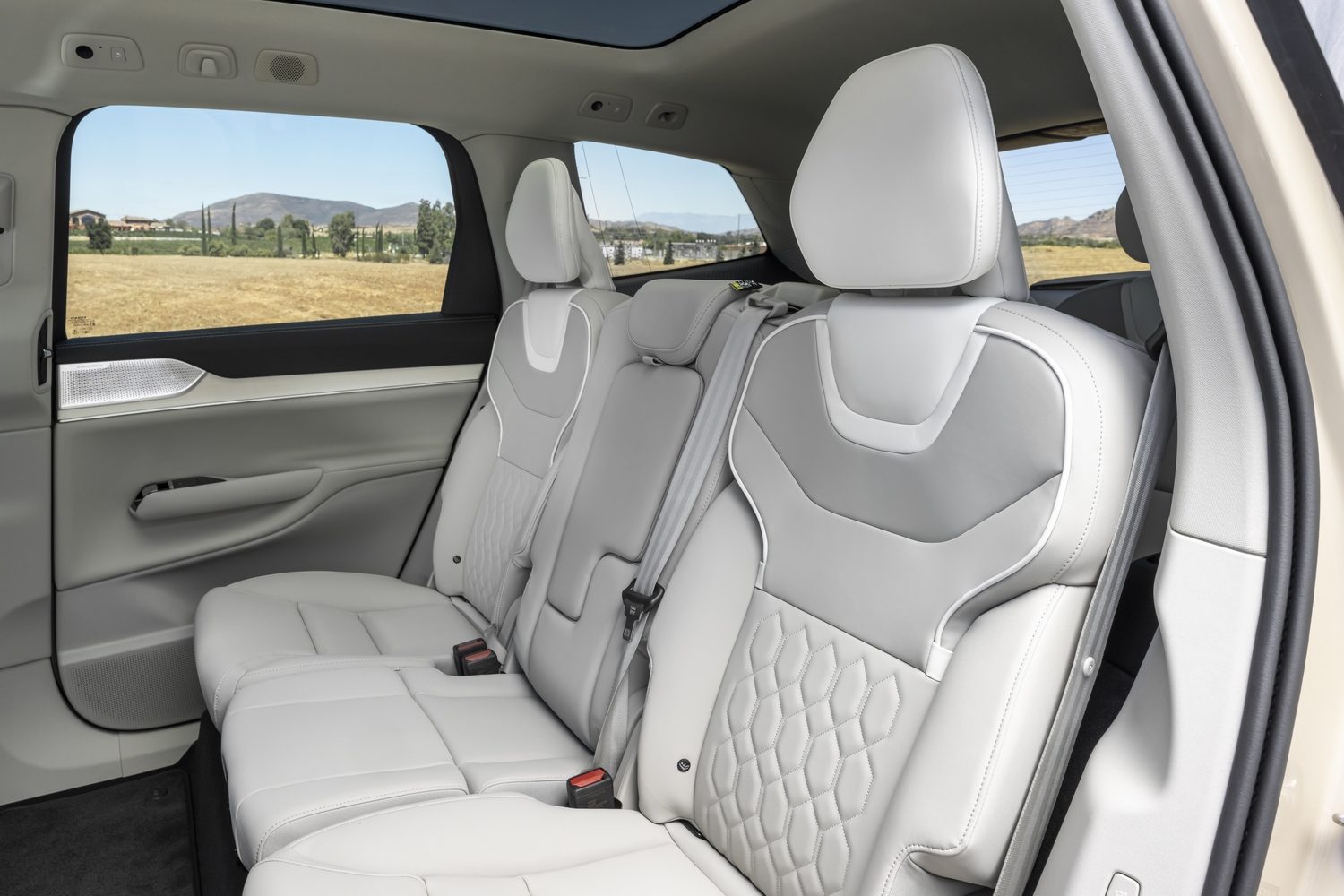
The second row provides good levels of passenger space and all three seats can slide forward or backwards to divvy up the room as required. Accessing the third row isn’t especially difficult; latches on the tops of the outer seats tilt them forward as they slides out of the way. This is quite an easy action and can be done one-handed. Kids won’t have any issues getting into the rearmost seats, though taller adults may find it a touch more challenging.
Still, once seated in the third row there is enough headroom for adults of average height and the panoramic glass roof adds an airy feel, so passengers won’t feel too confined in the third row.
As mentioned, the second-row seats can be moved forwards to create more legroom for those in row three. We found foot space to be slightly impeded by the floor mounts for the seats, though this is potentially less of an issue for smaller or younger passengers.
Obviously, the amount of space you have left over for luggage depends on how many seats are in use. Volvo quotes a minimum of 324 litres behind the third row, though that’s only to the window line, and it’s actually 384 litres stuffed to the roof. Fold down the rearmost row and the official volume increases to 669 litres, or a massive 1,029 litres to the roof.
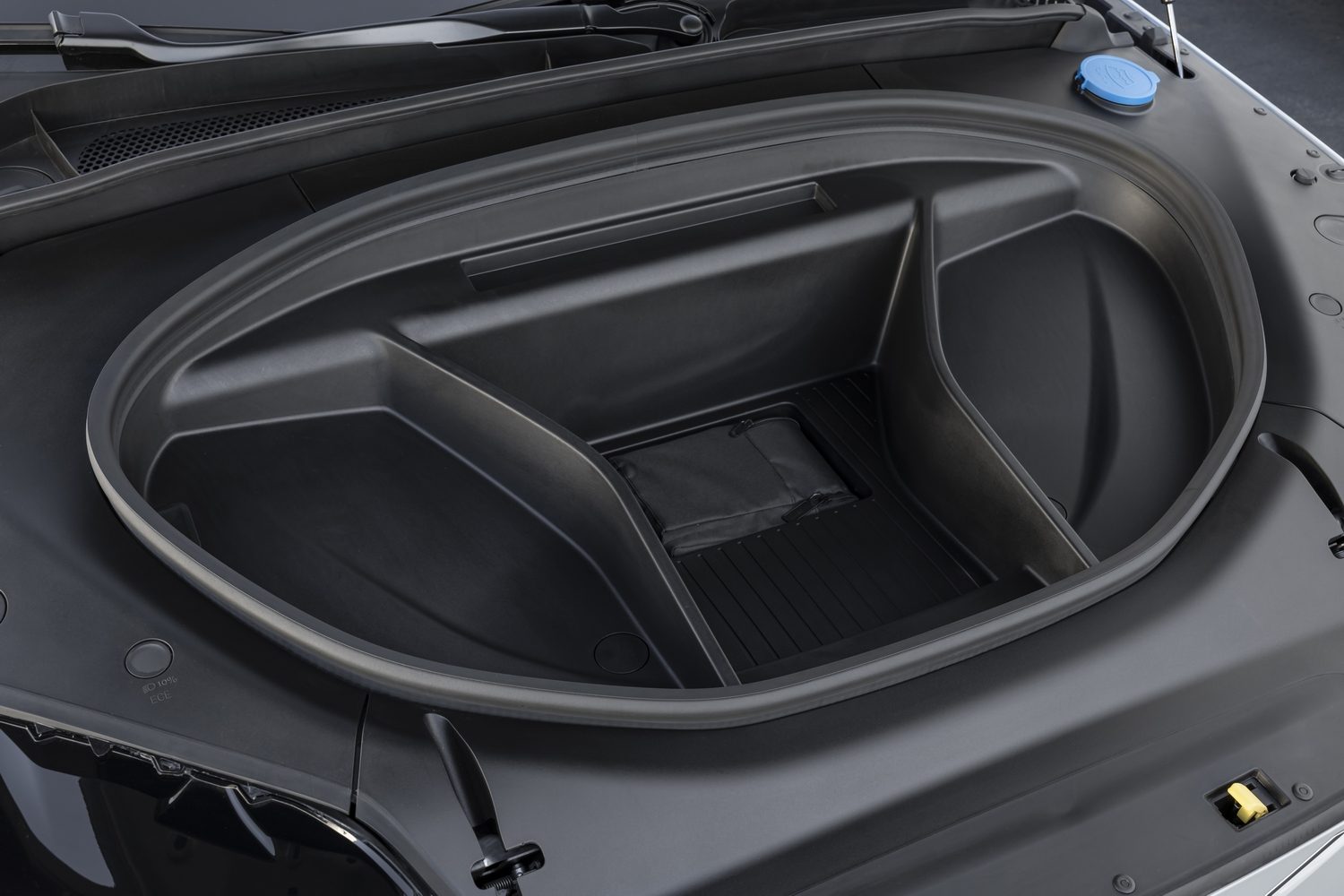
There’s no such thing as too much space, though, which is why the extra storage under the bonnet will be welcome - it measures up to 80 litres depending on model. The only downside to this extra ‘frunk’ is that like many other cars, it is released by pulling a latch inside the footwell and then releasing a second safety latch under the bonnet. This is less convenient to use than the electrically operated rear hatch, but if you don’t mind the extra steps, the space inside is useful, especially for storing charging cables.
A look at the interior of the Volvo EX90
The EX90’s cabin is one that exudes quality while demonstrating a chic minimalist design that’s very much in keeping with the company’s Scandinavian heritage. ‘Birch Wood’ inlays, for example, create a lovely contrast with the metallic brightwork along the borders of the dashboard. ‘Charcoal Nordico’ upholstery is standard, but the ‘Tailored Wool Blend’ upholstery is especially nice, both aesthetically and how it feels to the touch, although the light colour might not be practical for those with small kids.
A 14.5-inch portrait touchscreen does away with the need for any physical buttons around the centre console, except for a single rotary controller that adjusts volume and media. The drive selector is located on the steering column.
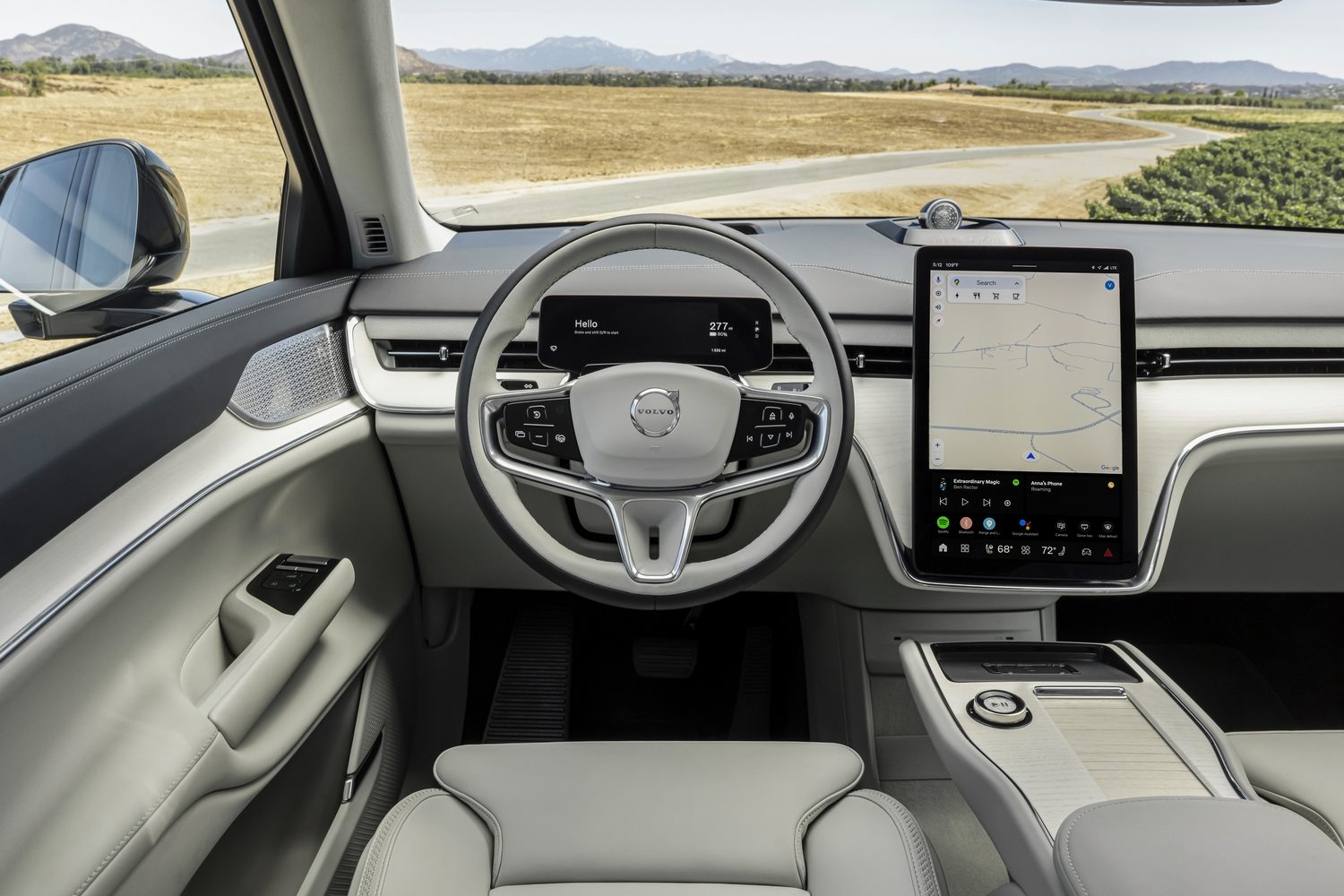
The three-spoke steering wheel is a good size and contains two panels with what Volvo describes as compound buttons. These are physical buttons that also have a capacitive layer that detects when your fingers initially touch them and prompts are displayed on the eight-inch instrument screen to help you press the right button. All of the driving assistance is accessed via the left side while the media and voice assistant on the right.
Aside from the minimalist look, there are some nice little touches around the cabin, such as the design of the Swedish flag stamped into the metal trim of the dashboard on the passenger side. Volvo also attaches a small Swedish flag to the inner side of the front seat, much like a clothing label. Another small detail we liked is a panel at the top of the boot that shows in picture form what kind of items can fit inside.
How many child seats can I fit into the Volvo EX90?
There are four ISOFIX mounting points in the Volvo EX90, consisting of the two outer seats in the middle row and the two seats in the third row. As mentioned above, all three seats in that middle row are individual seats, so they can be set at different positions and the central position looks big enough to take a child seat held in place by the seatbelt - certainly most booster-style ones.
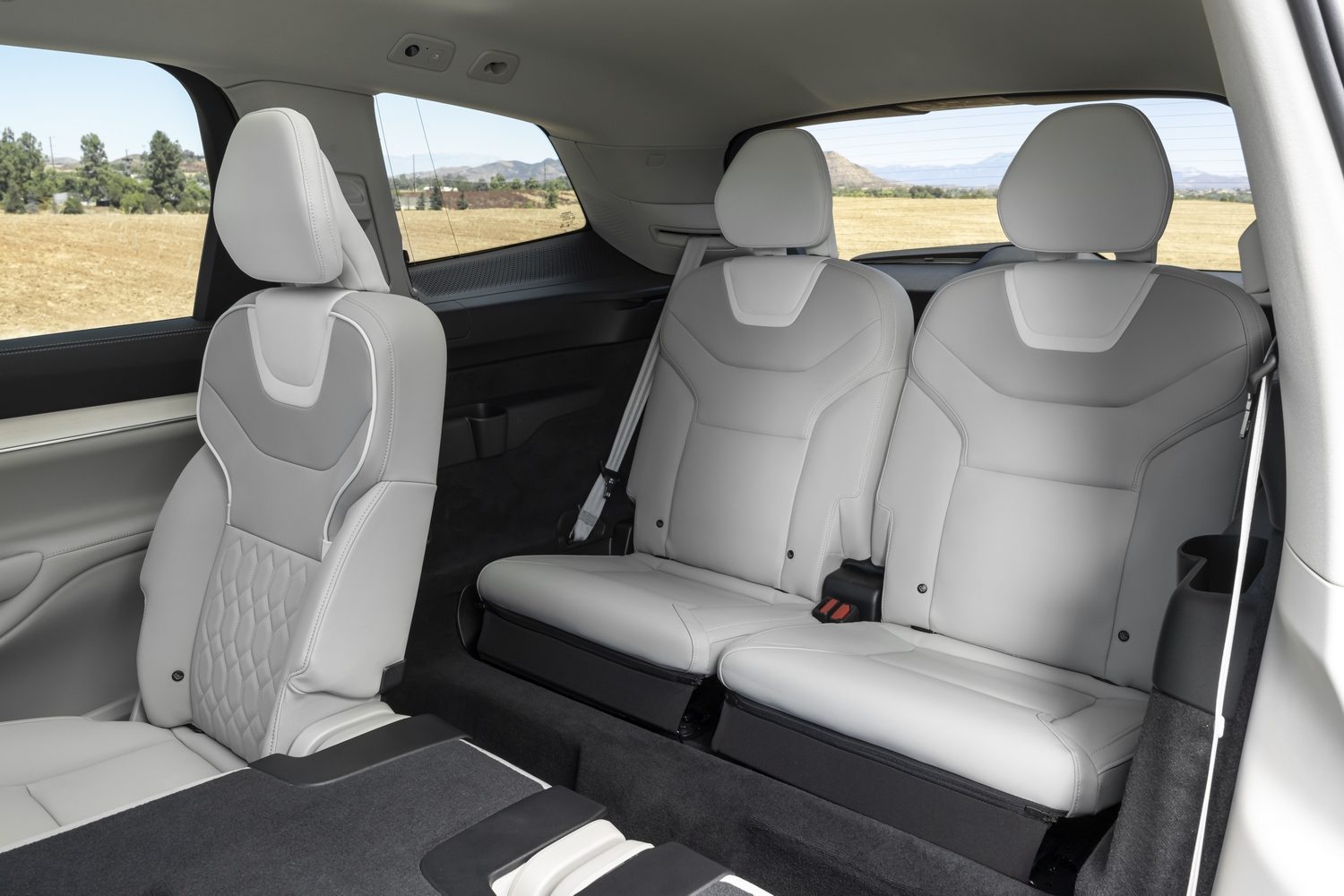
Though actually, you may not need your own booster as there’s a built-in child seat for the centre seat in the second row. The seat base easily unlatches, sliding upwards and rearwards to serve as a booster seat when required. It’s quick and easy to do, making it one of those features that parents will surely love.
What’s the range of the Volvo EX90?
The official electric driving range of the Volvo EX90 Twin Motor Performance is between 570 and 614 kilometres, while Volvo Ireland quotes a combined range of 602 kilometres for both versions of the Ultra specification. The range an owner will achieve will of course vary depending a number of different things, from outside temperature and driving style to how many passengers are in the car.
During our time with the Volvo saw it return a respectable 20kWh/100km in energy consumption. The test drive took in a number of different scenarios including hilly climbs and motorways. That figure is better than the official combined energy consumption, so that bodes well for the achievable range.
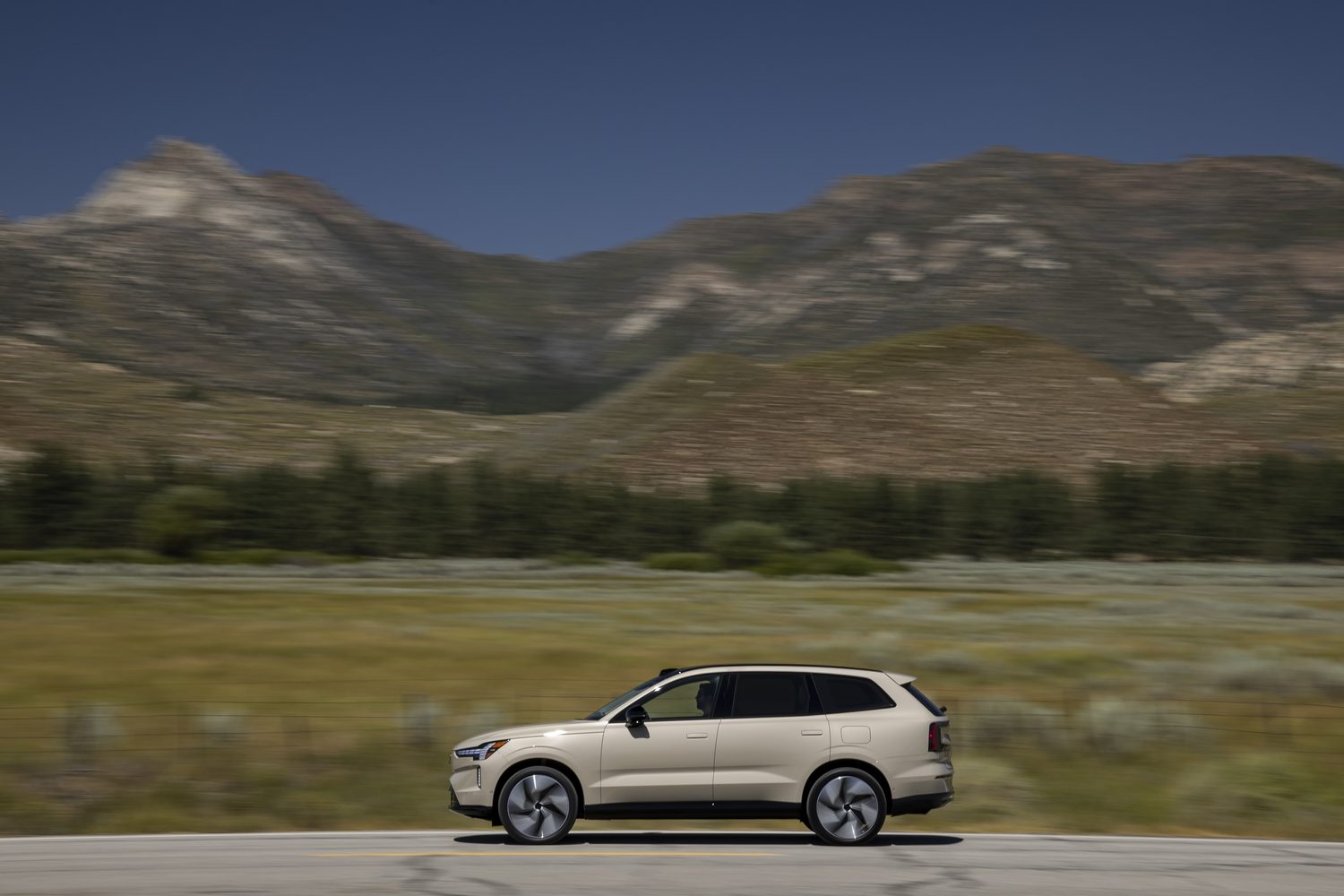
Helping that is an energy recovery system with three settings, from a coasting mode when the car rolls freely, to an automatic setup where it determines when is best to recuperate energy back into the battery during deceleration. There’s also a one-pedal mode that has the strongest retardation and is most suitable for city and town driving.
When it comes to charging the EX90’s substantial 107kWh battery, it take some time to fully charge from empty at a home charger, though with most average driving distances it’s likely to only need to be topped up with home charging rather than be fully recharged every night. There’s 11kW AC charging to avail of slower public chargers, but the 250kW peak DC charging means that a 10 to 80 per cent recharge can be done is as little as 30 minutes.
Driving the Volvo EX90
We expected the EX90 to demonstrate a refined driving experience, but we weren’t prepared for just how impressively quiet it is on the move. The electric powertrain certainly helps, but it’s clear that Volvo’s engineers have gone to considerable lengths to make the EX90 extra quiet. Even on the sizeable 22-inch tyres, there is very little in the way of road noise, while wind noise and any undesirable sounds from the electric motors on either axle are notable by their absence.
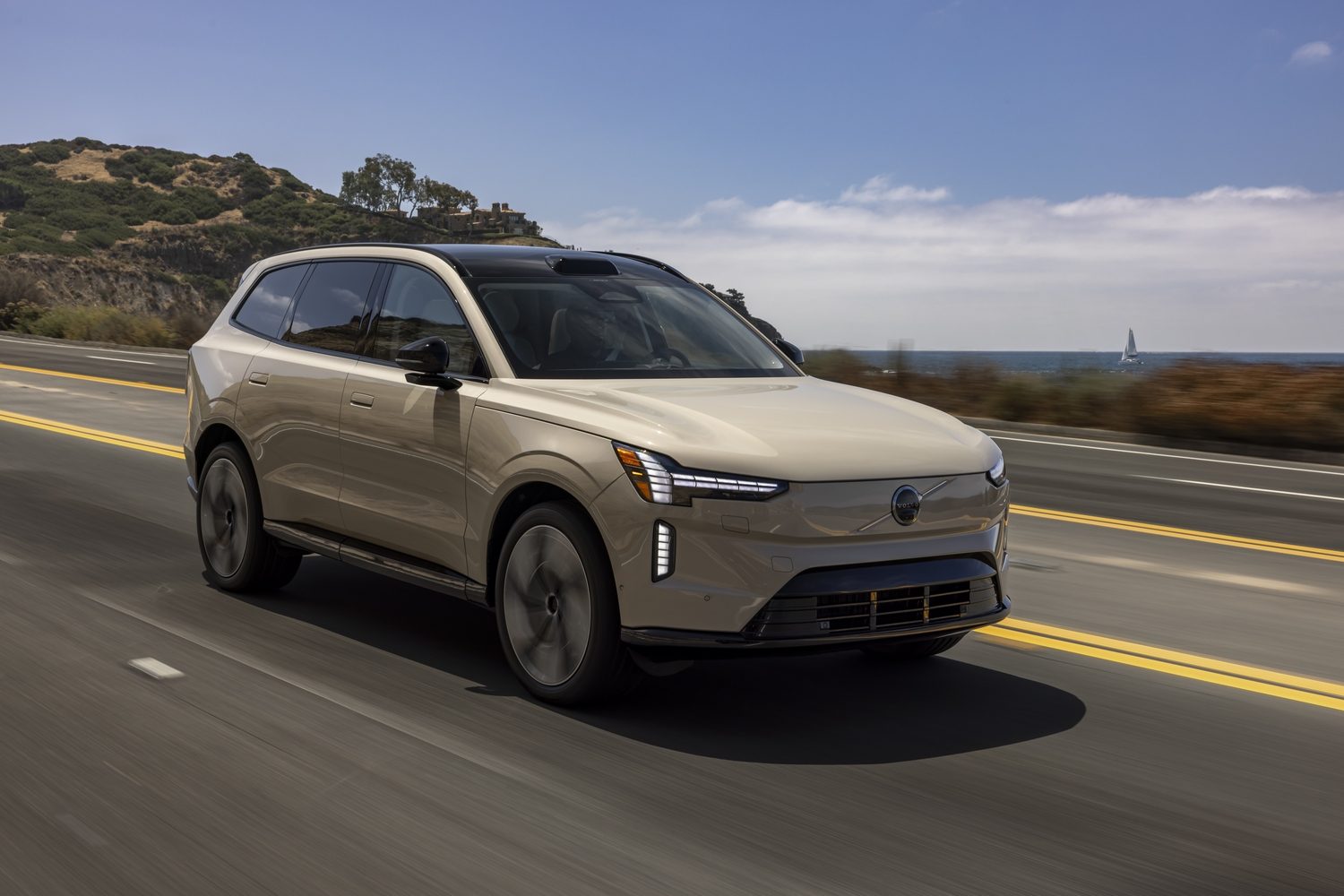
Both EX90 variants on sale in Ireland use a dual-motor setup, but the Twin Motor Performance model tested here has an additional 109hp. In the normal driving mode there is plenty of torque on hand to pull the EX90 along, and its performance arrives in a smooth and consistent manner. For the most part, it uses the electric motor on the front axle before drawing on the rear axle’s motor - the more powerful of the two - as required. Drivers can also select the Performance mode from the lower section of the touchscreen, which keeps both motors active at all times and results in sharper acceleration, making the big Volvo feel more potent.
All versions also come with adaptive air suspension and this offers two selectable settings - soft and firm. On smoother roads the soft setting adds a layer of plushness to the ride over what you’d typically expect from a passive suspension setup. Bumps are soaked up easily and overall the EX90 feels very smooth to drive, mirroring the power delivery.
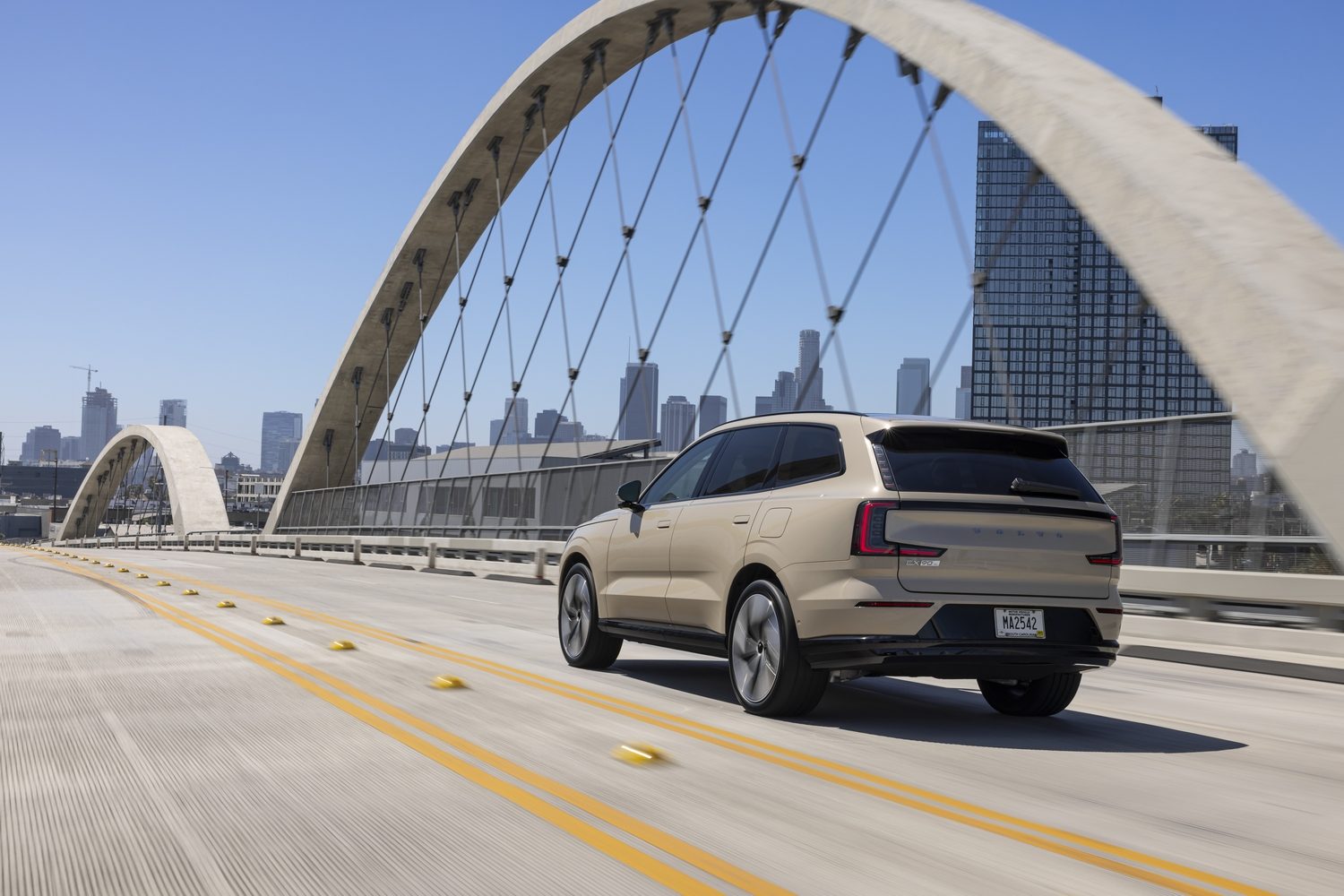
Switching to the firm setting immediately changes the feel of the suspension, and even on a smooth road there is a more noticeable busyness from the suspension. What was interesting is that on coarser tarmac, and at higher speeds, switching to the firm setting improved the overall feeling of how the car handled. The EX90 will automatically adapt other parameters such as ride height, which is speed dependent, lowering itself to improve aerodynamic efficiency.
As with the suspension, the steering also has the choice of soft or firm settings. Our preference was for the soft, as it makes the Volvo very easy to drive without feeling too light or disconnected. We found the firm mode isn’t excessively heavy, but in switching between the two we preferred the soft setting for most driving scenarios.
On the move the Volvo feels planted and stable on the road. There is some body lean to give it a natural feel, though it is kept well in check. The EX90 is capable of being hustled along at a quick pace, but the overall character of the car is one that’s more about comfort and refinement rather than outright performance. Adopt a more relaxed driving style in the Volvo and it makes long distances melt away. A worthy mention is also due to the front seats, which are extremely comfortable even after hours at the wheel.
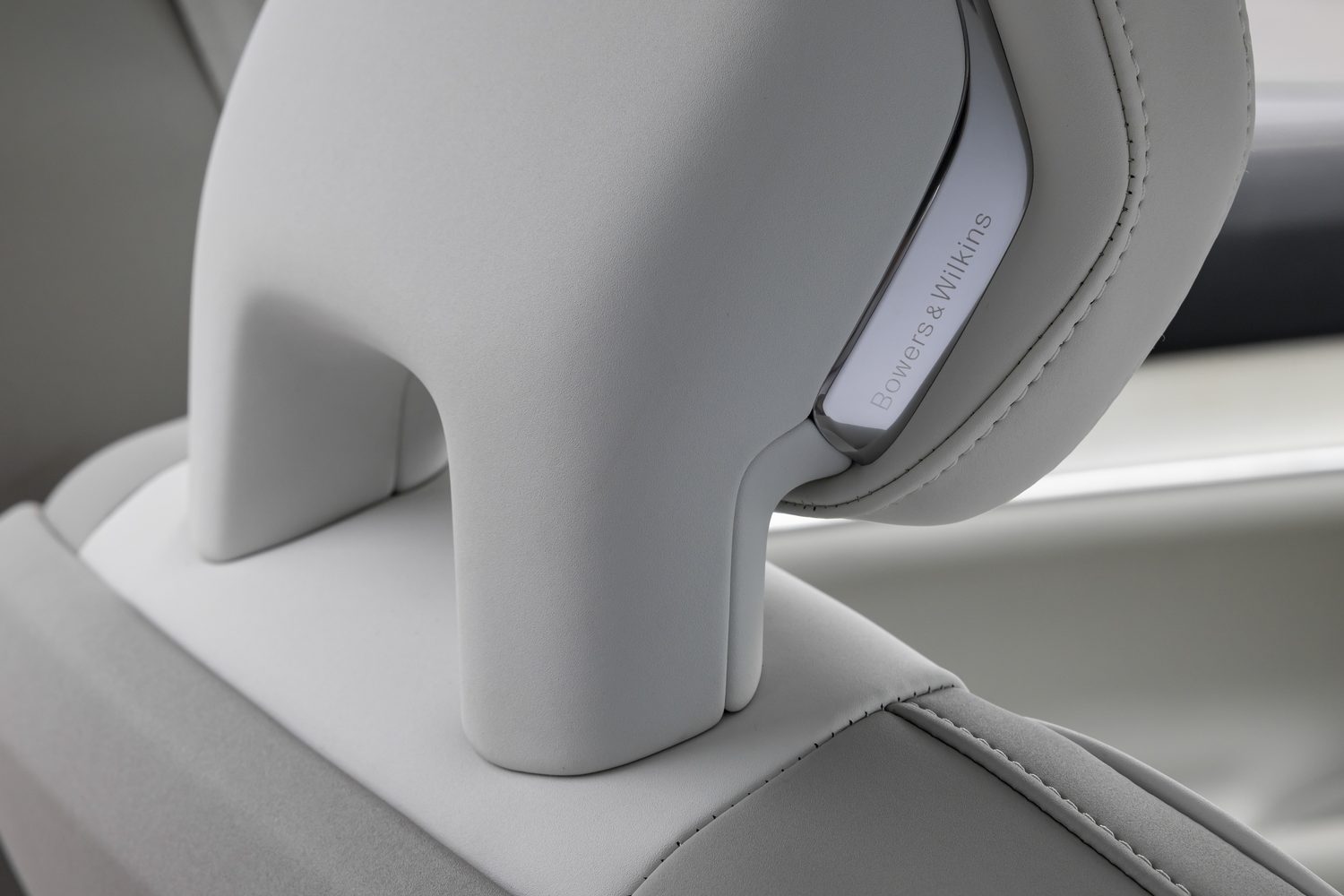
How much is the Volvo EX90 in Ireland?
The Volvo EX90 launches in Ireland with one equipment level called Ultra, and this is available with a choice of two powertrains: the 408hp Twin Motor or the 517hp Twin Motor Performance, the latter of which is what we’re reviewing here.
Irish pricing for the EX90 Ultra Twin Motor starts at €117,910 excluding delivery and related charges, while the EX90 Ultra Twin Motor Performance costs from €122,910.

There is a high level of standard equipment in the Ultra specification, so we won’t list every item here, but among the highlights are 22-inch, five-spoke alloy wheels, Pilot Assist, Park Pilot Assist, adaptive air suspension, four-zone climate control and a heat pump.
When it comes to adding optional extras, there aren’t a huge amount to choose from. Certain exterior paint colours will add €1,250 to the bottom line while an electrically retractable towbar will set you back €1,500 and the tailored wool blend upholstery costs €1,350. Volvo Ireland also offers a care package costing €990 that covers scheduled servicing including wear and tear times such as brake discs and brake pads (as required) and wiper blades.
Ask us anything about the Volvo EX90
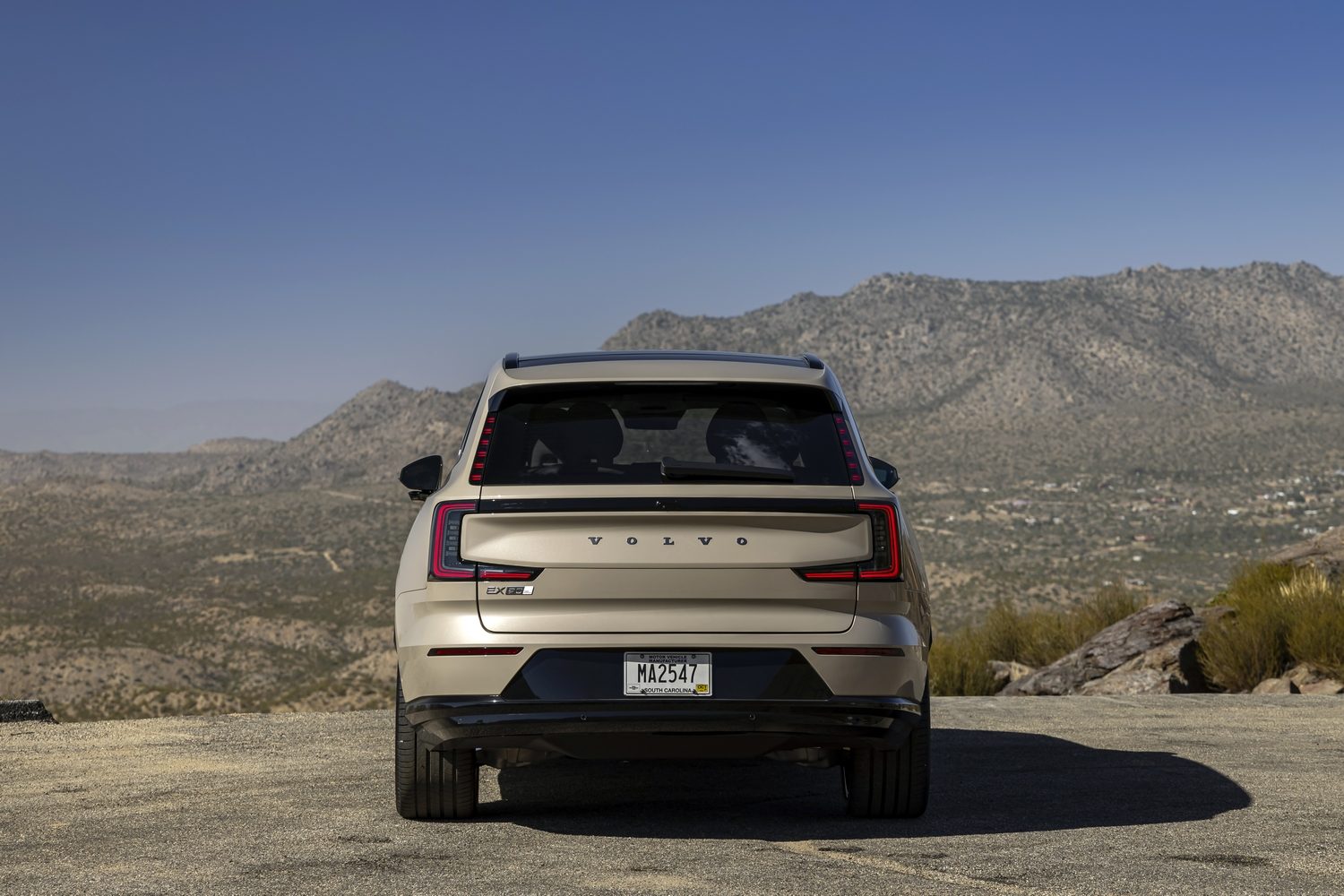
If there’s anything about the Volvo EX90 we’ve not covered, or you’d like advice in choosing between it and other vehicles, you can avail of our (completely free) expert advice service via the Ask Us Anything page.

